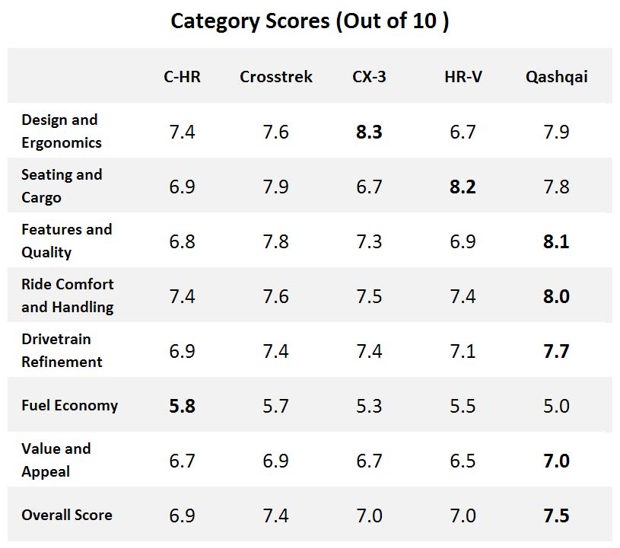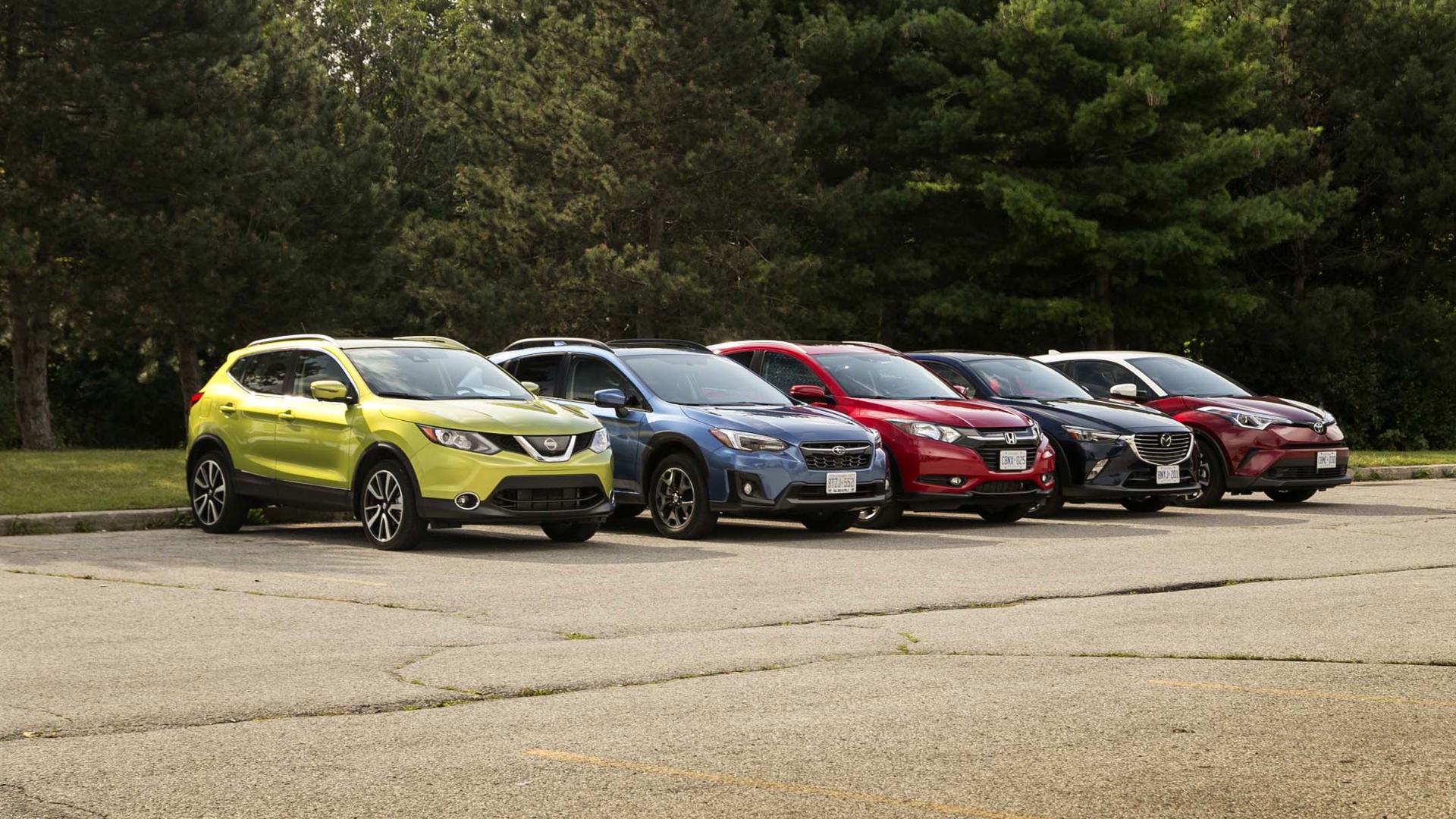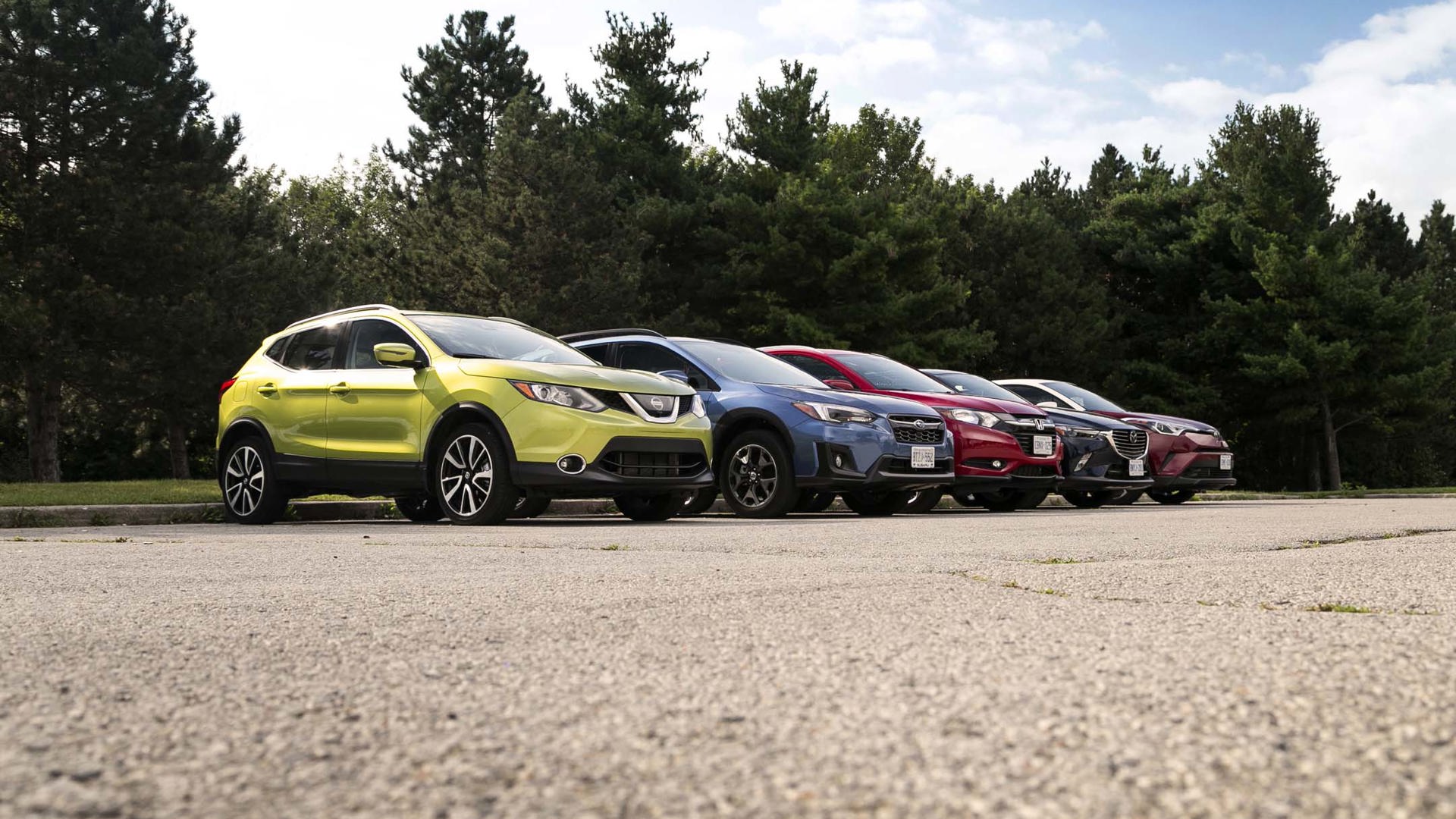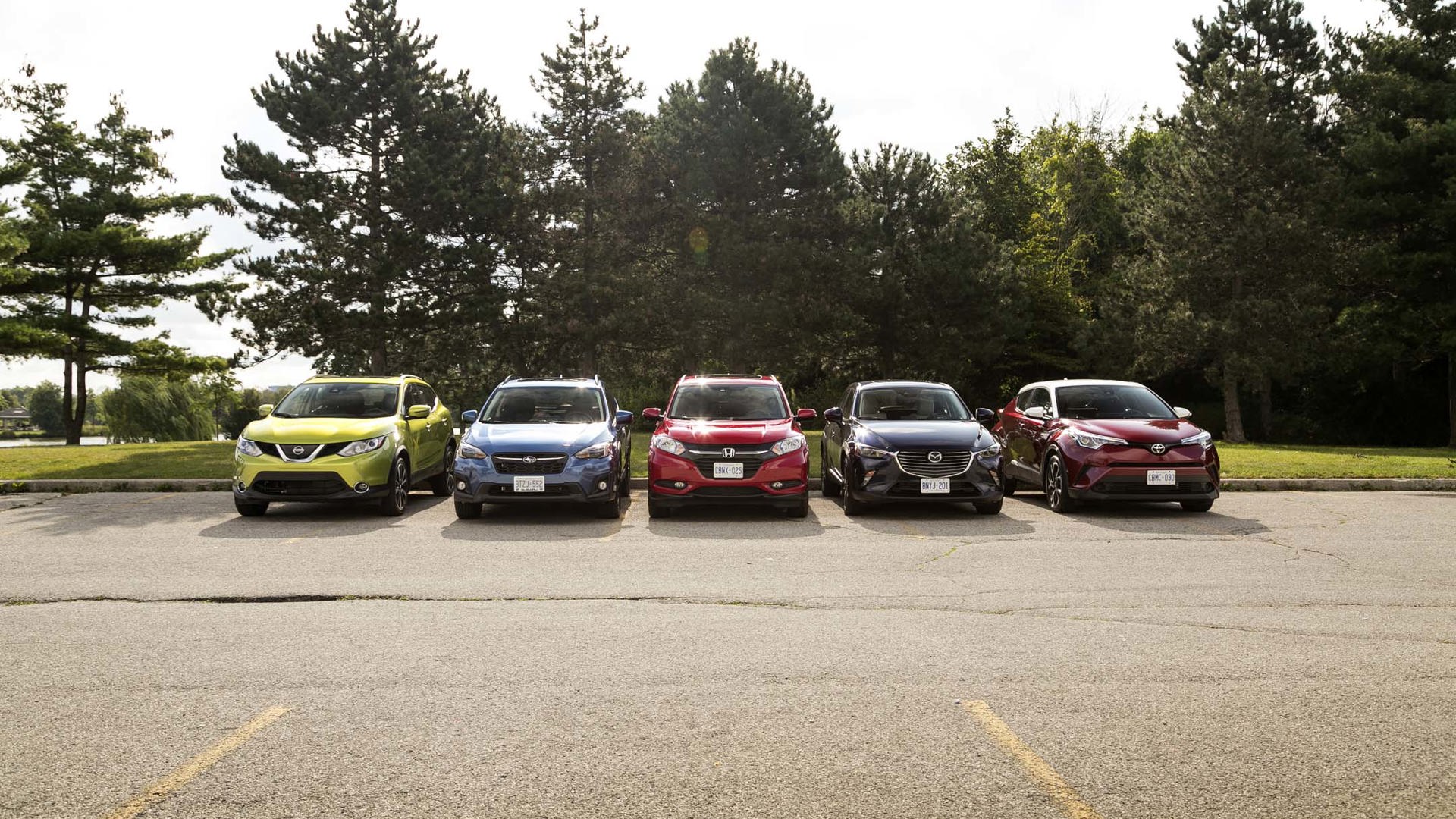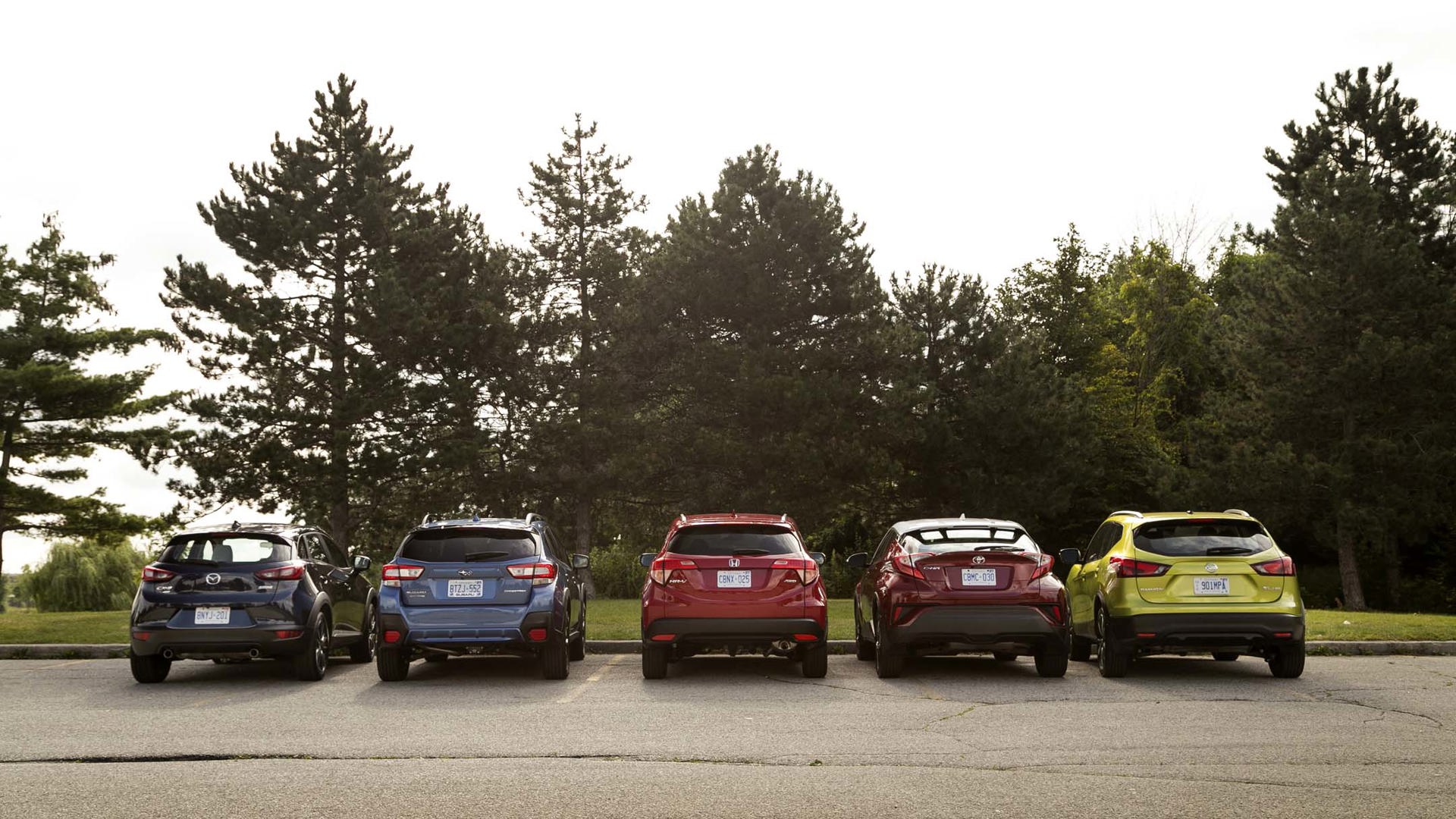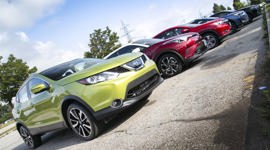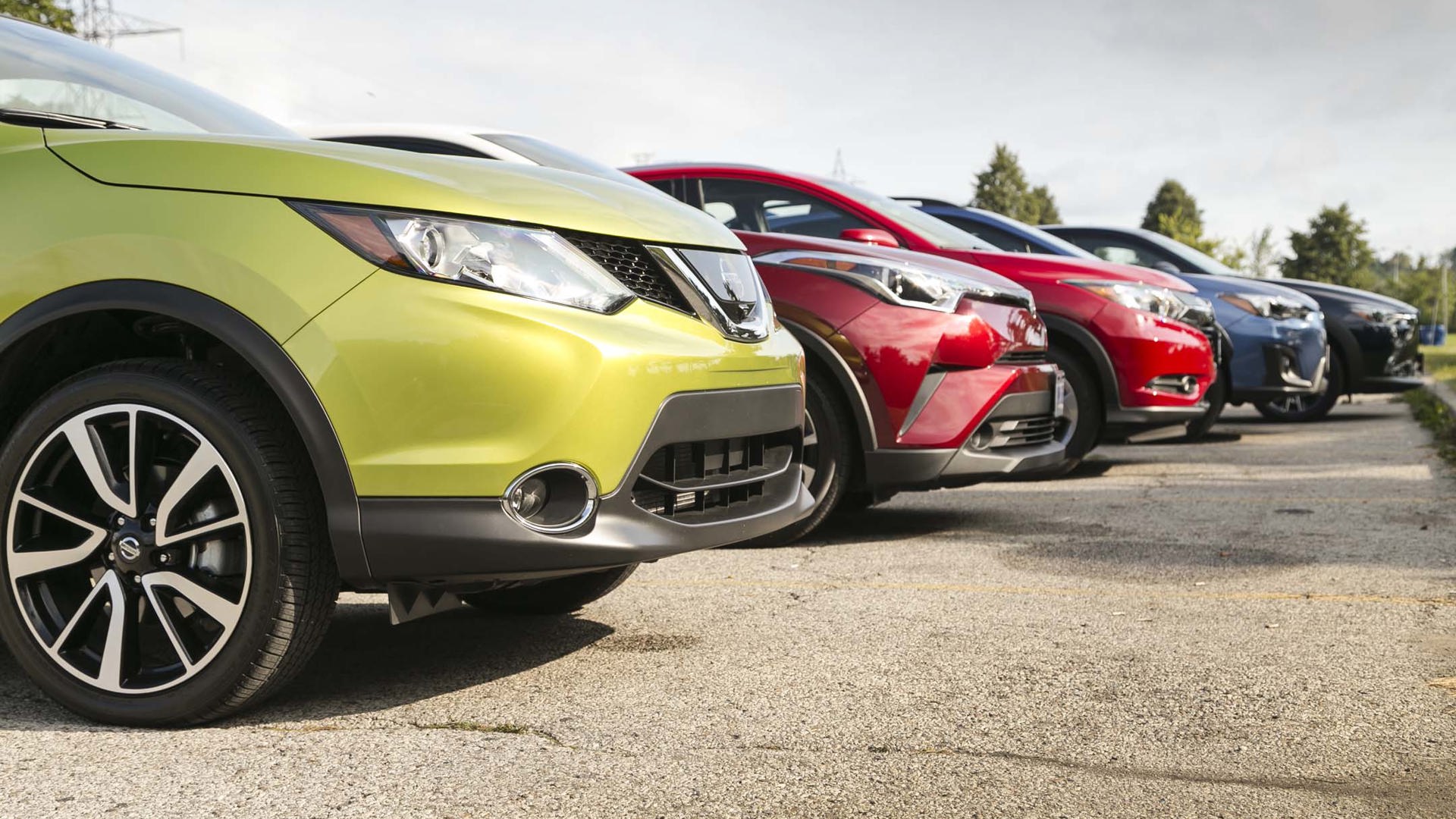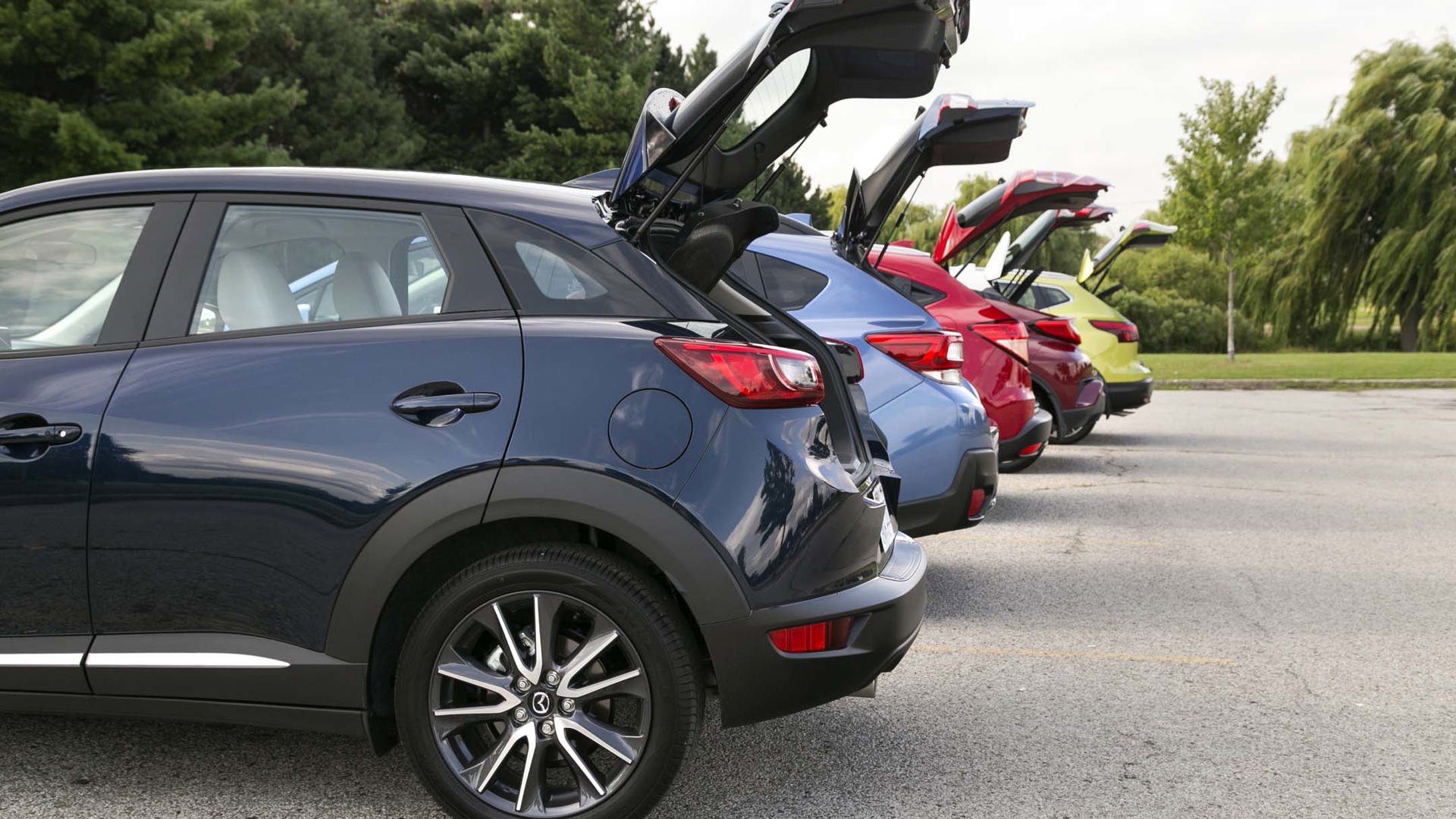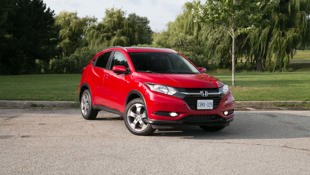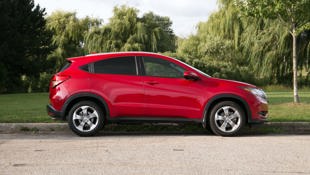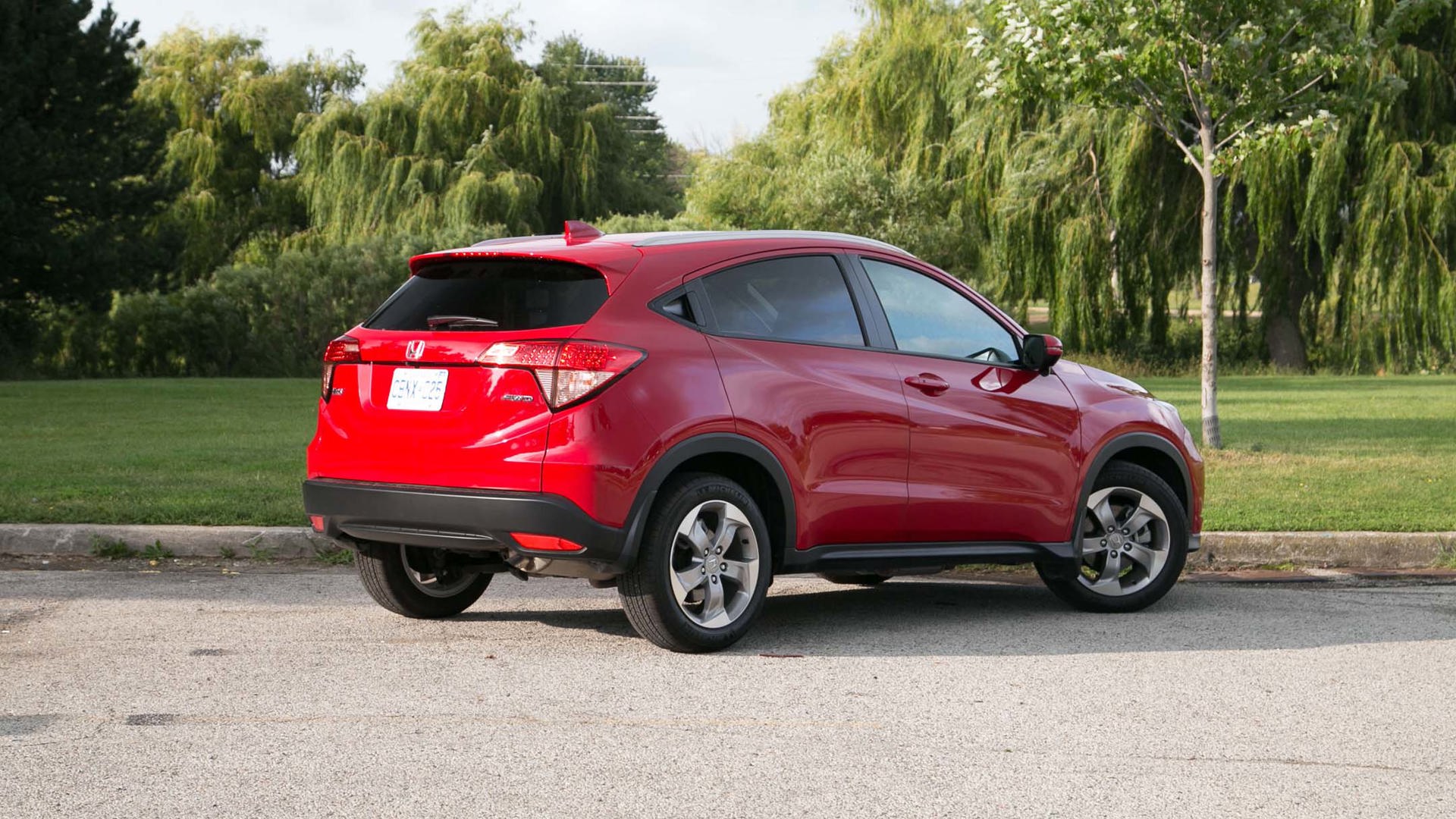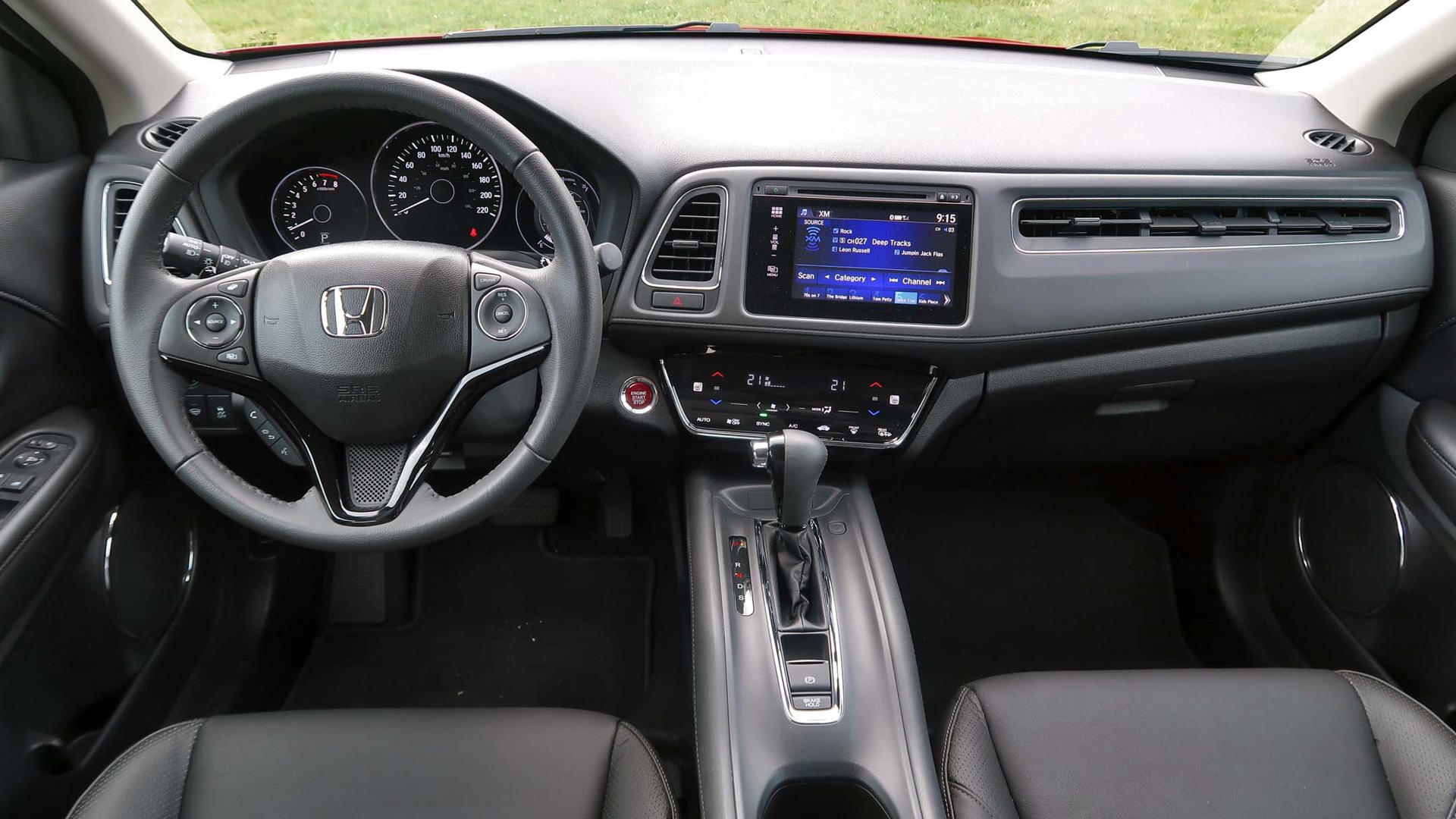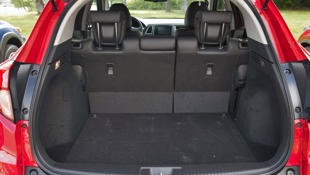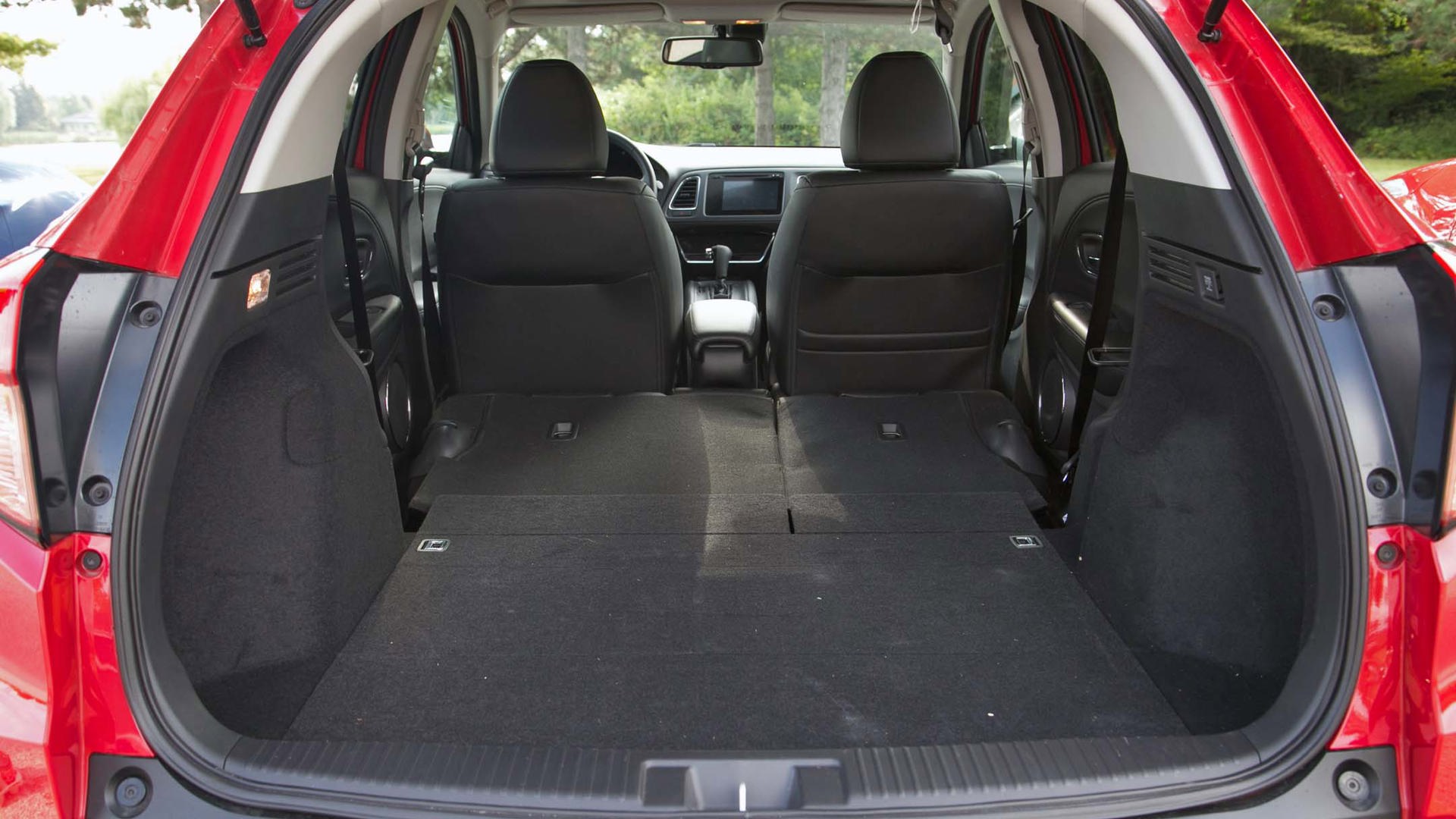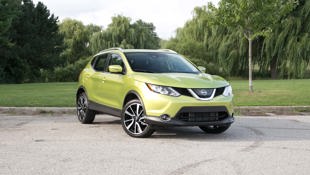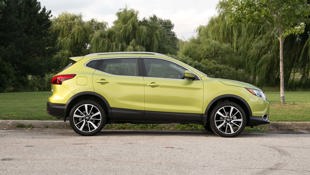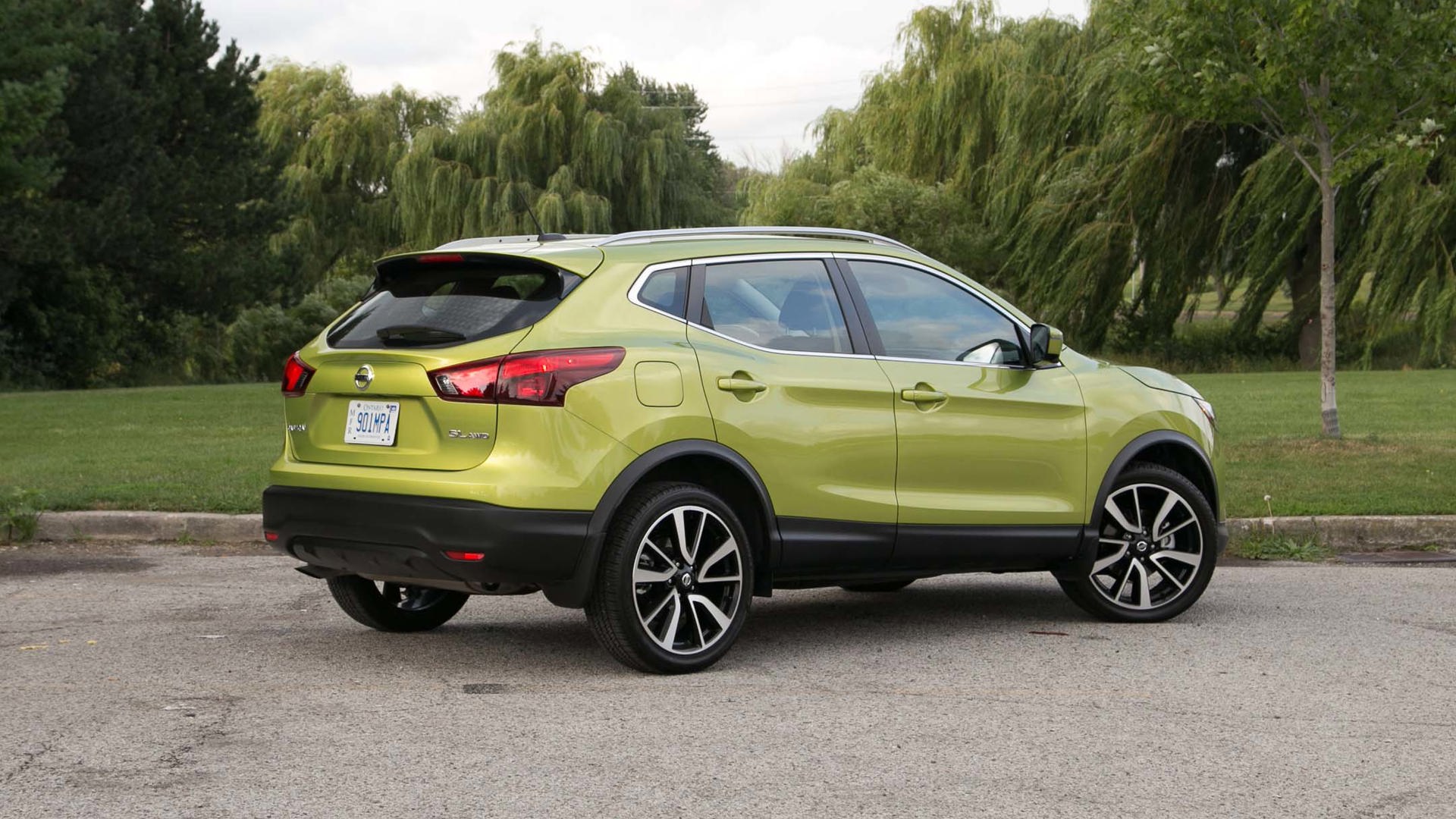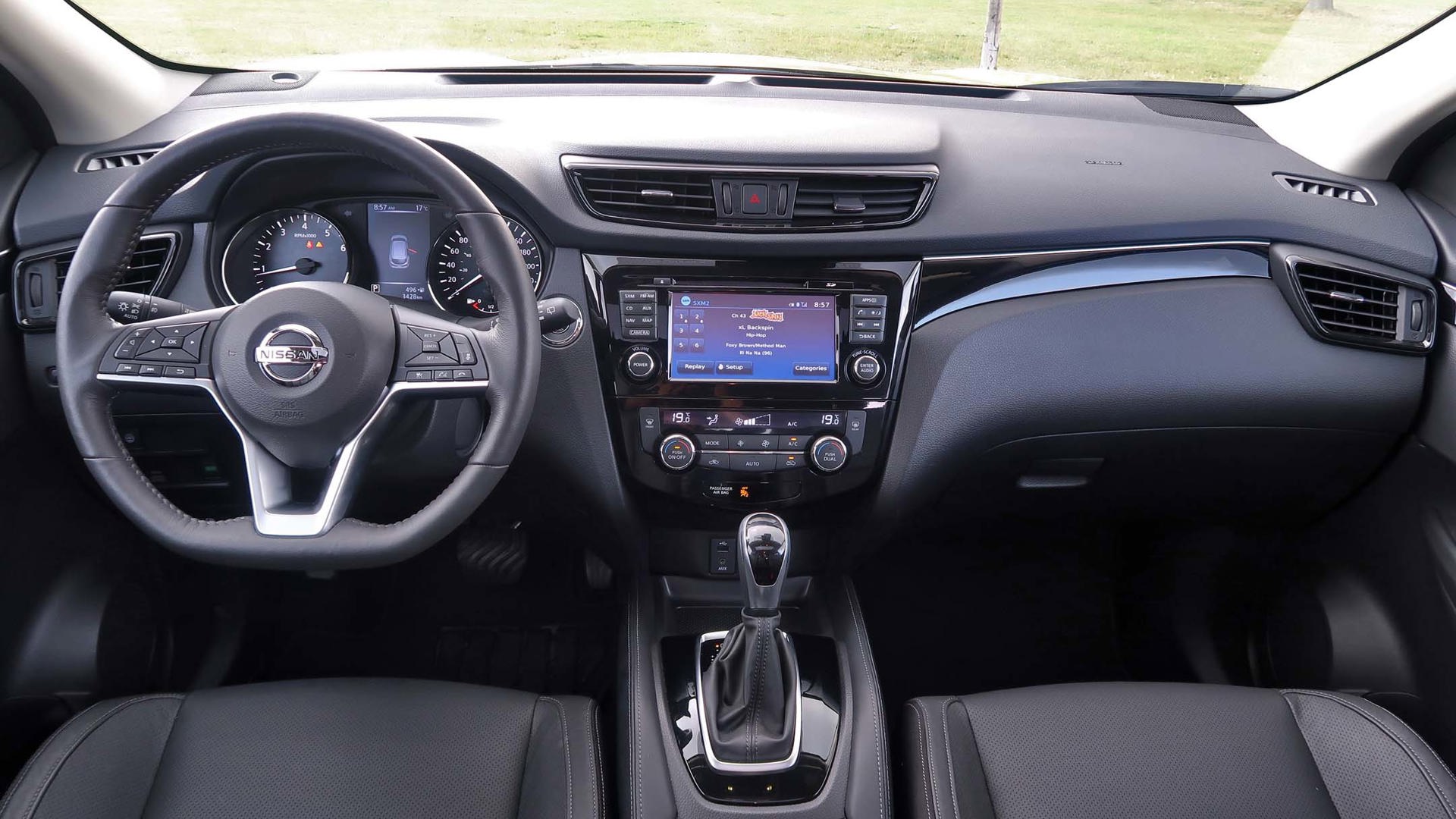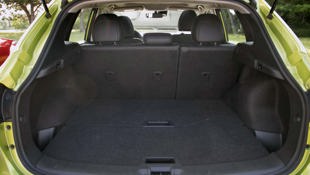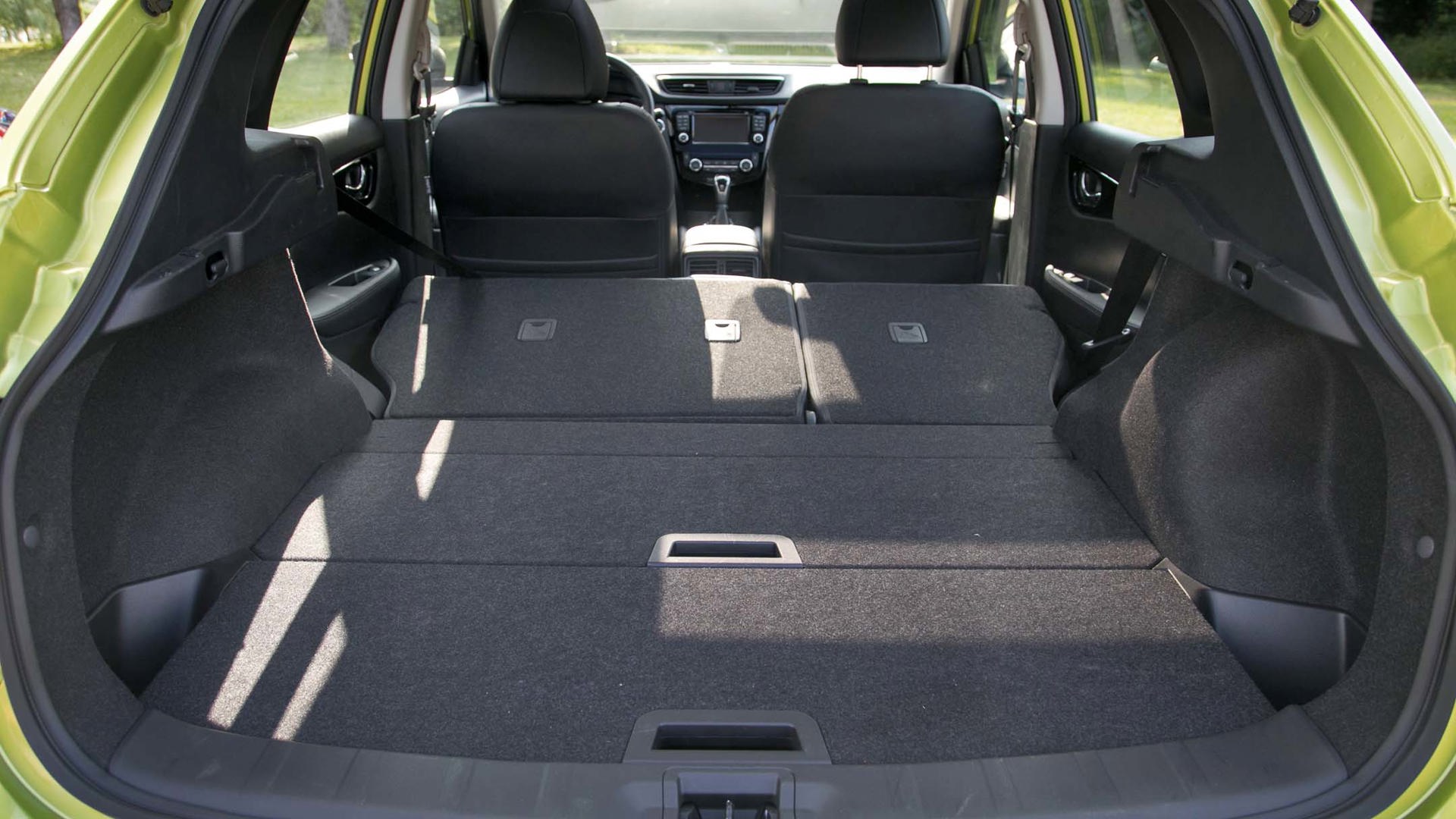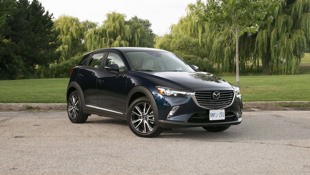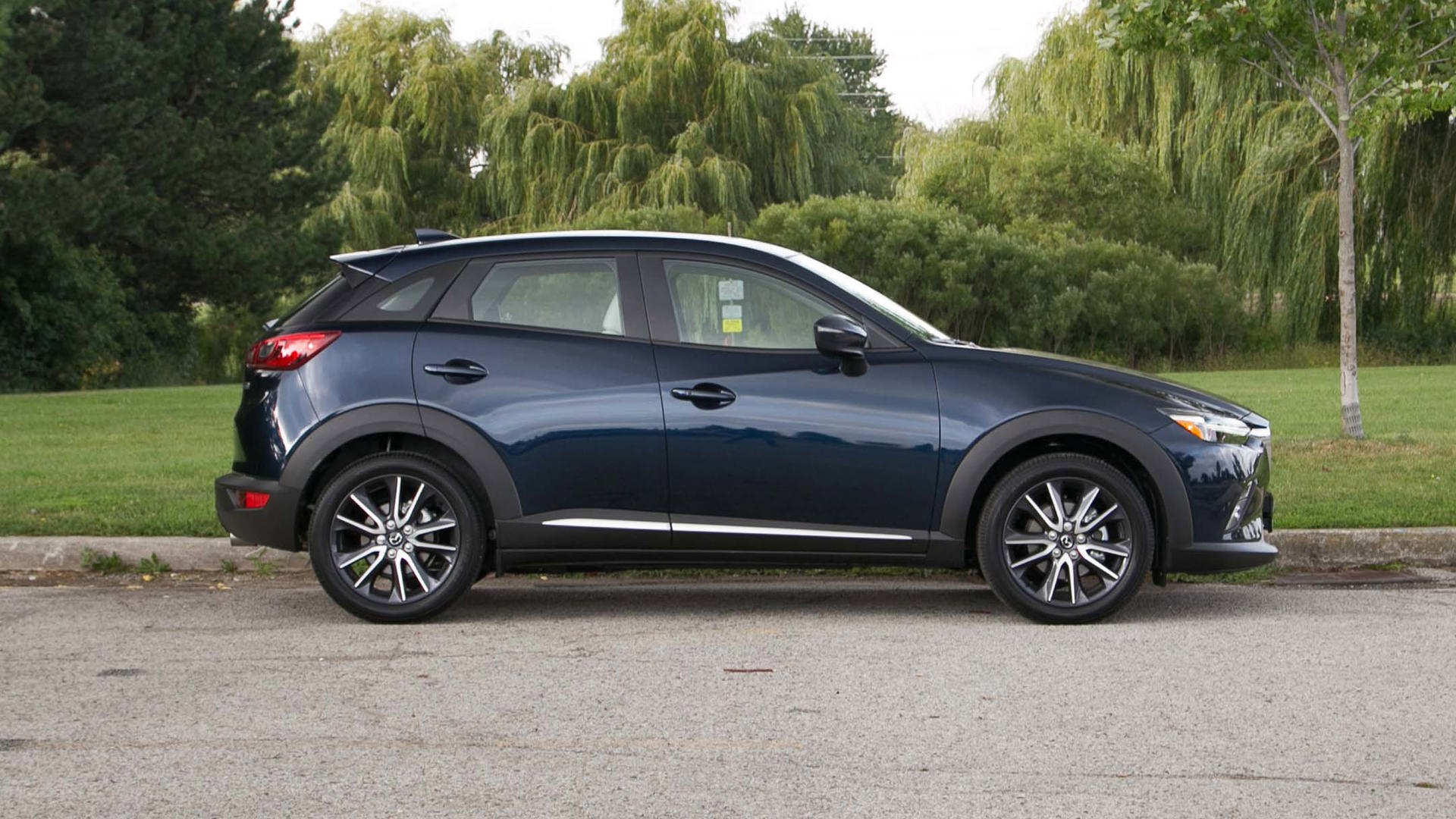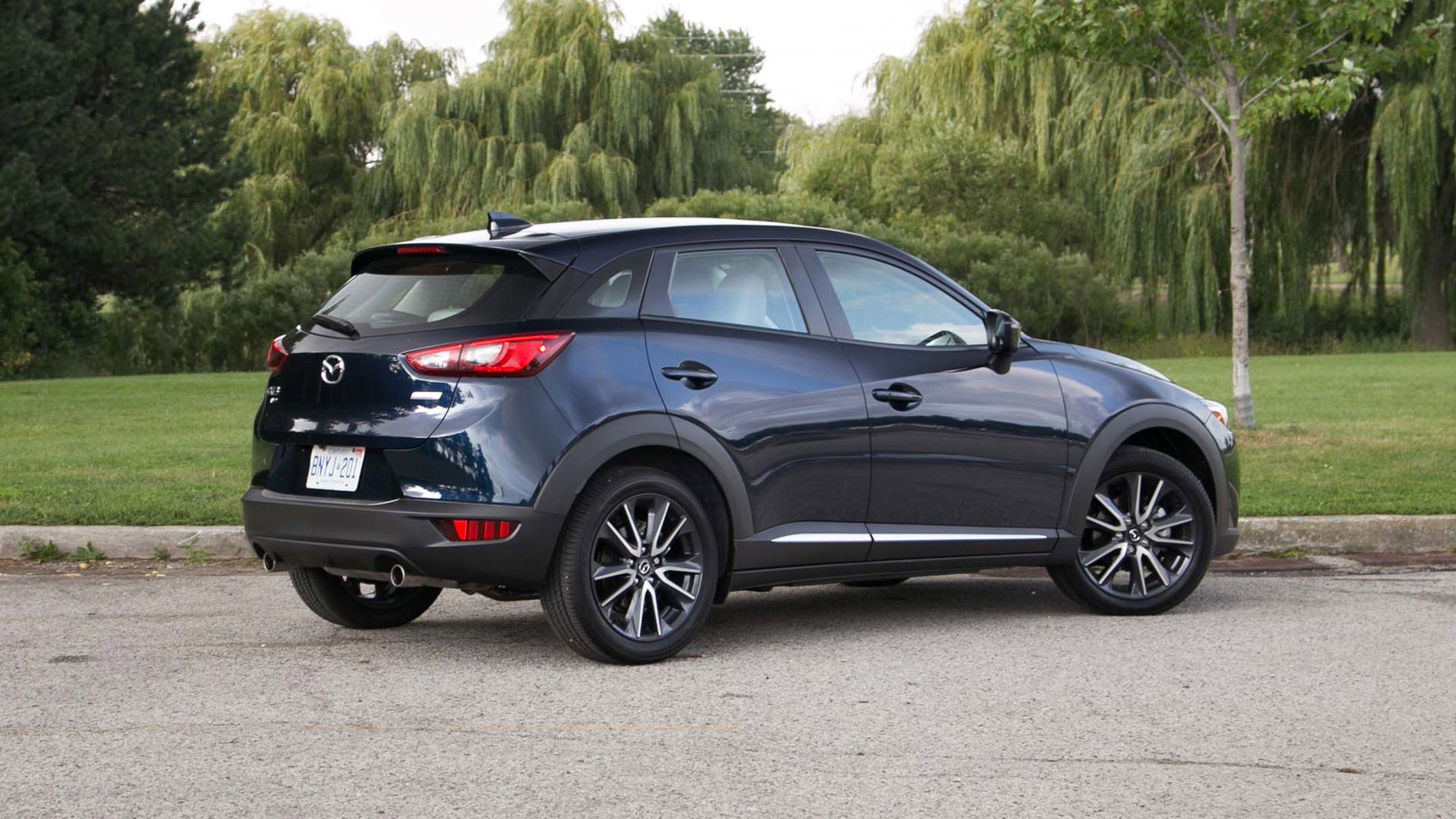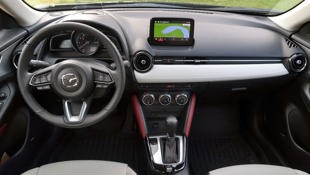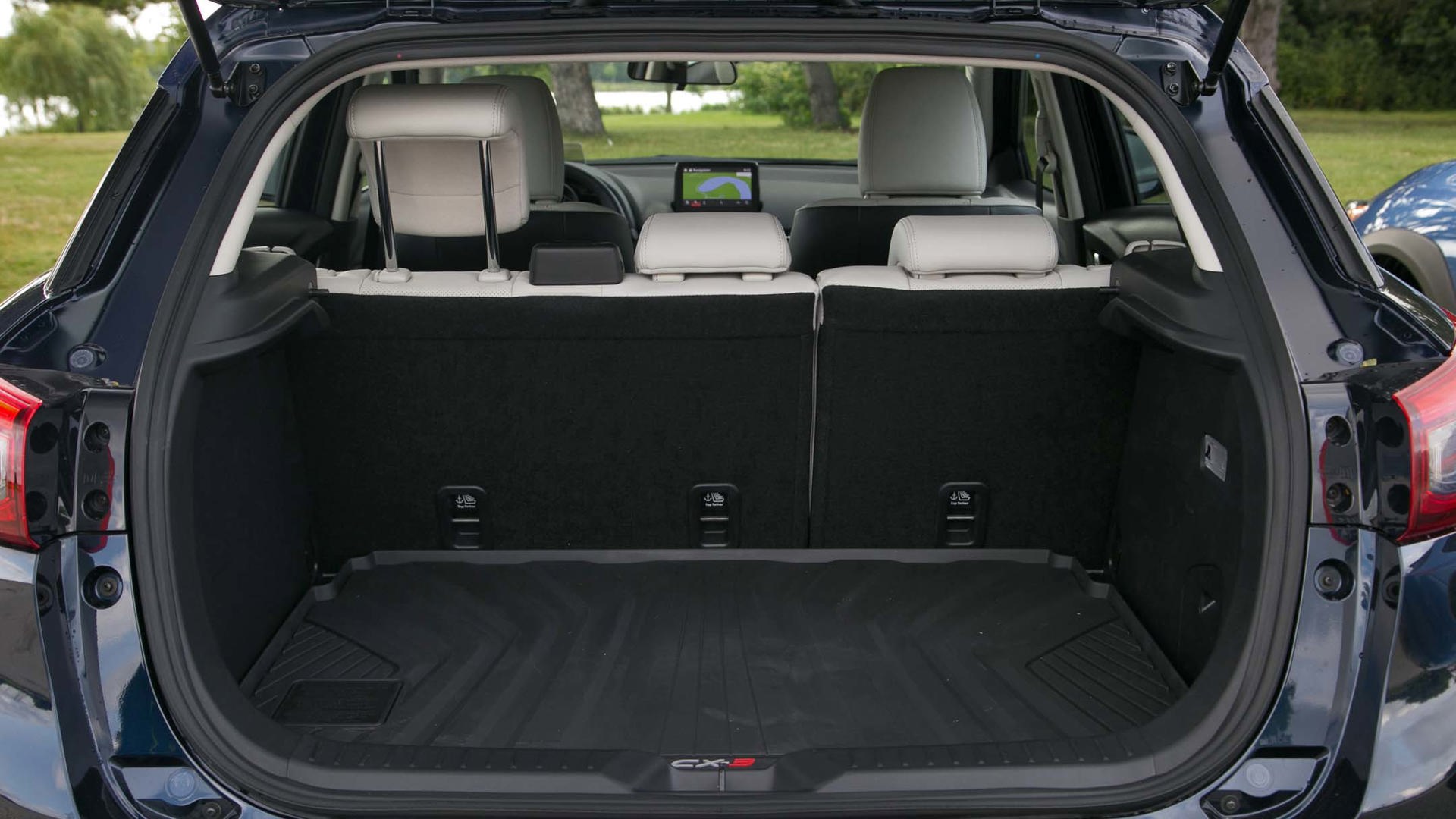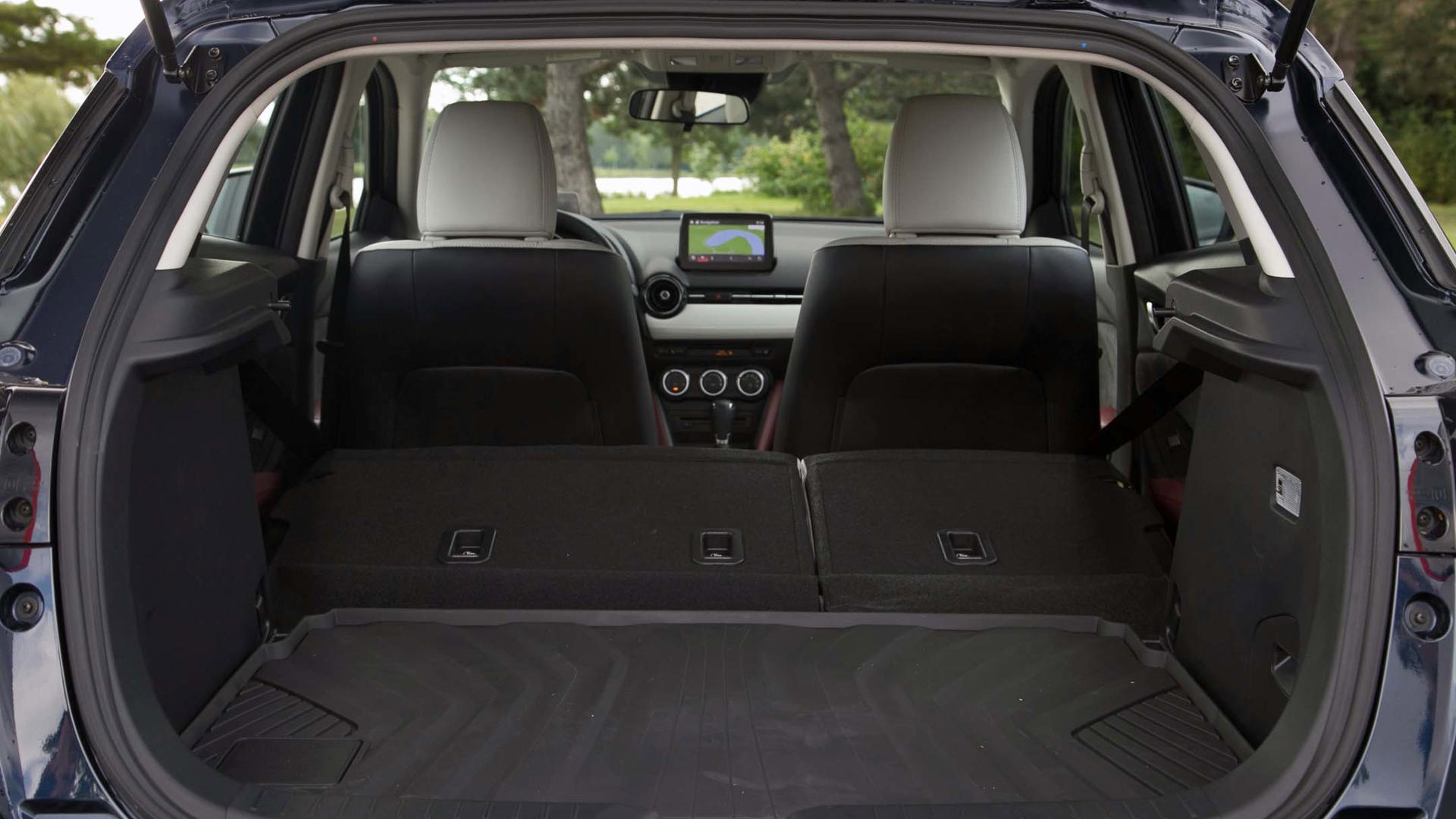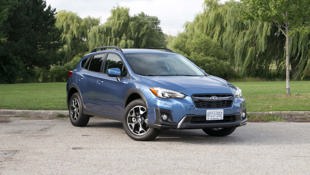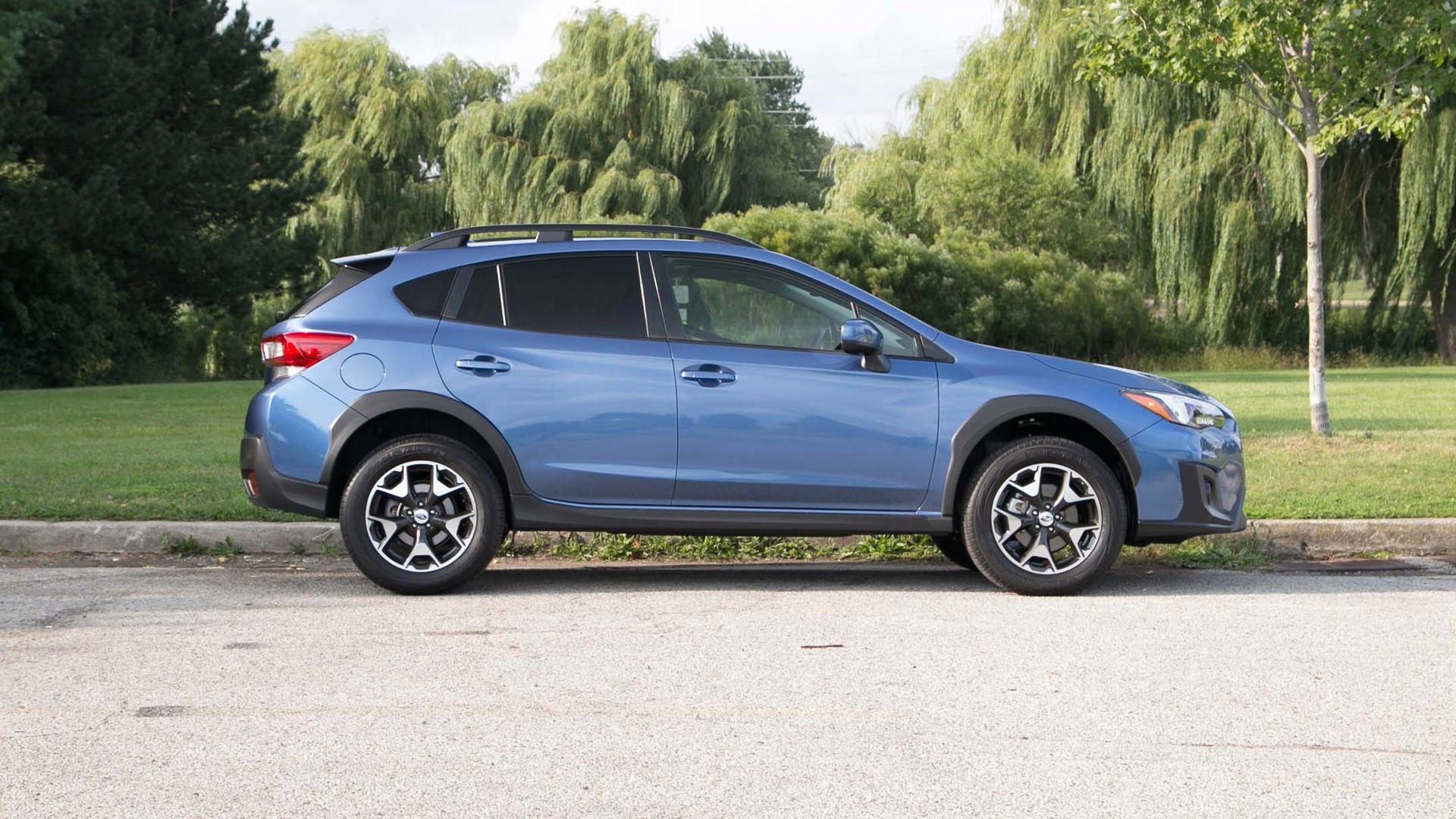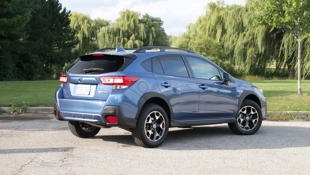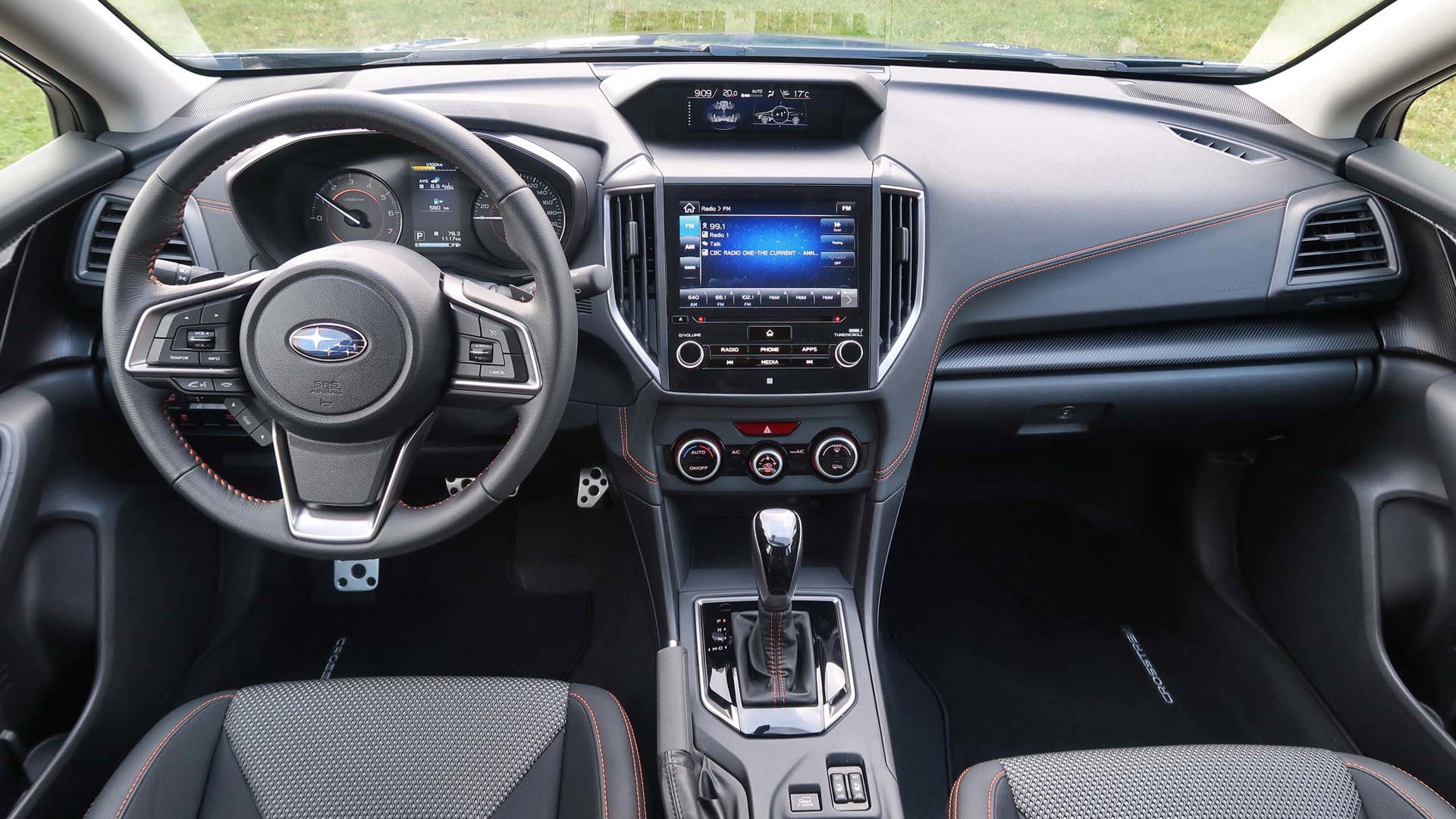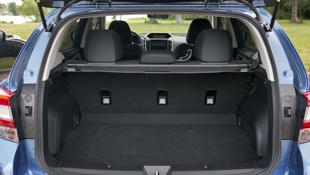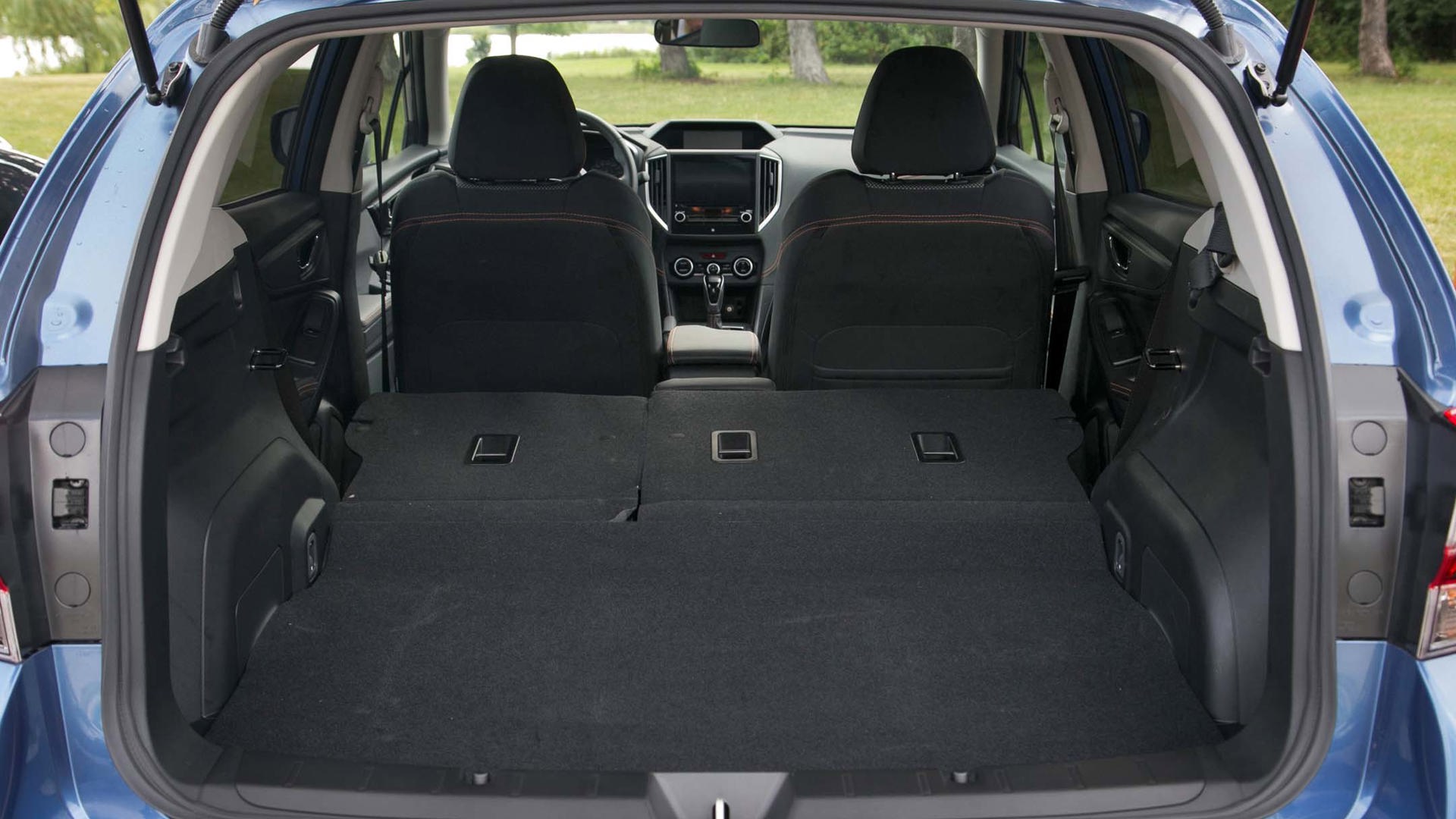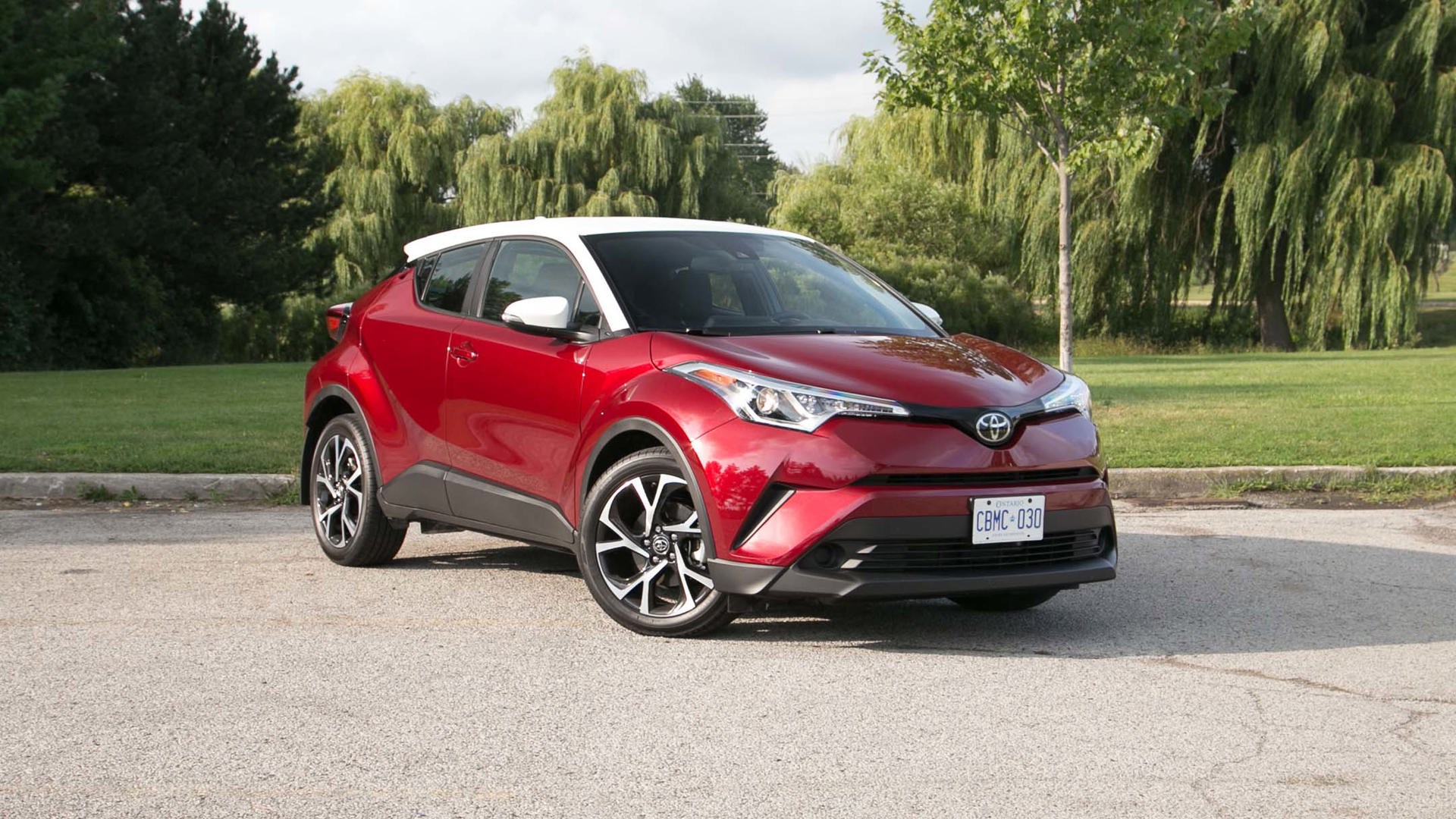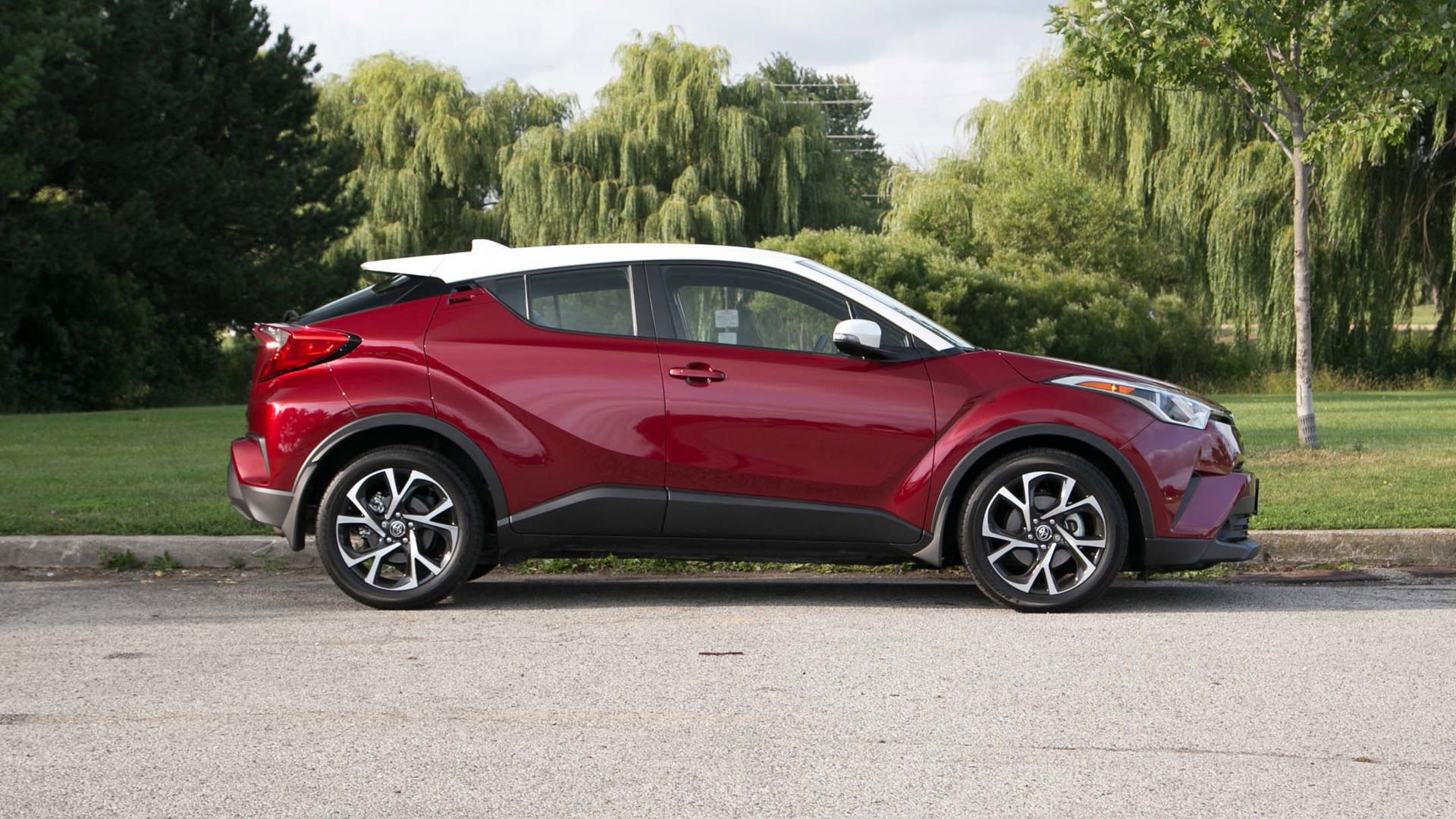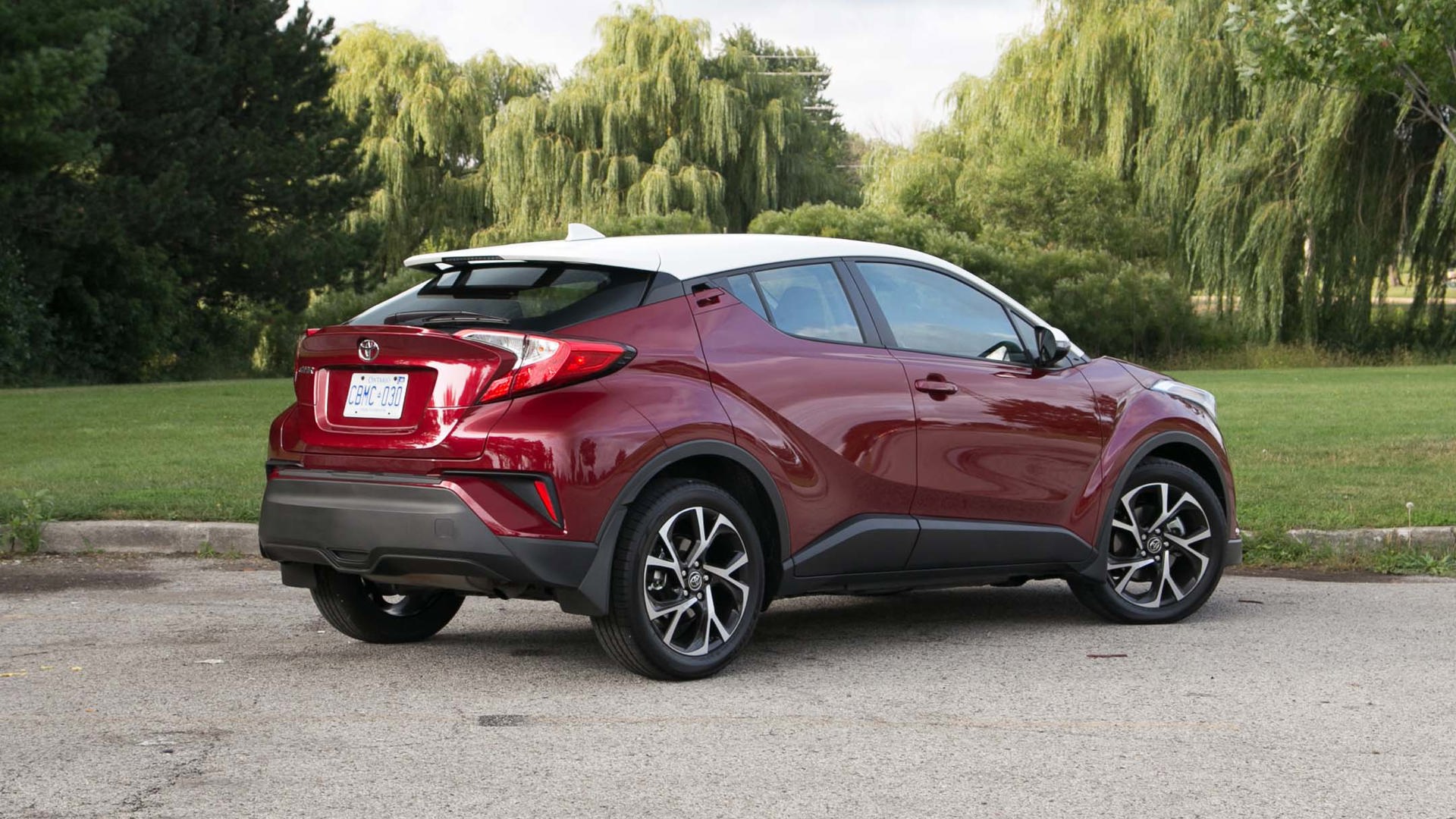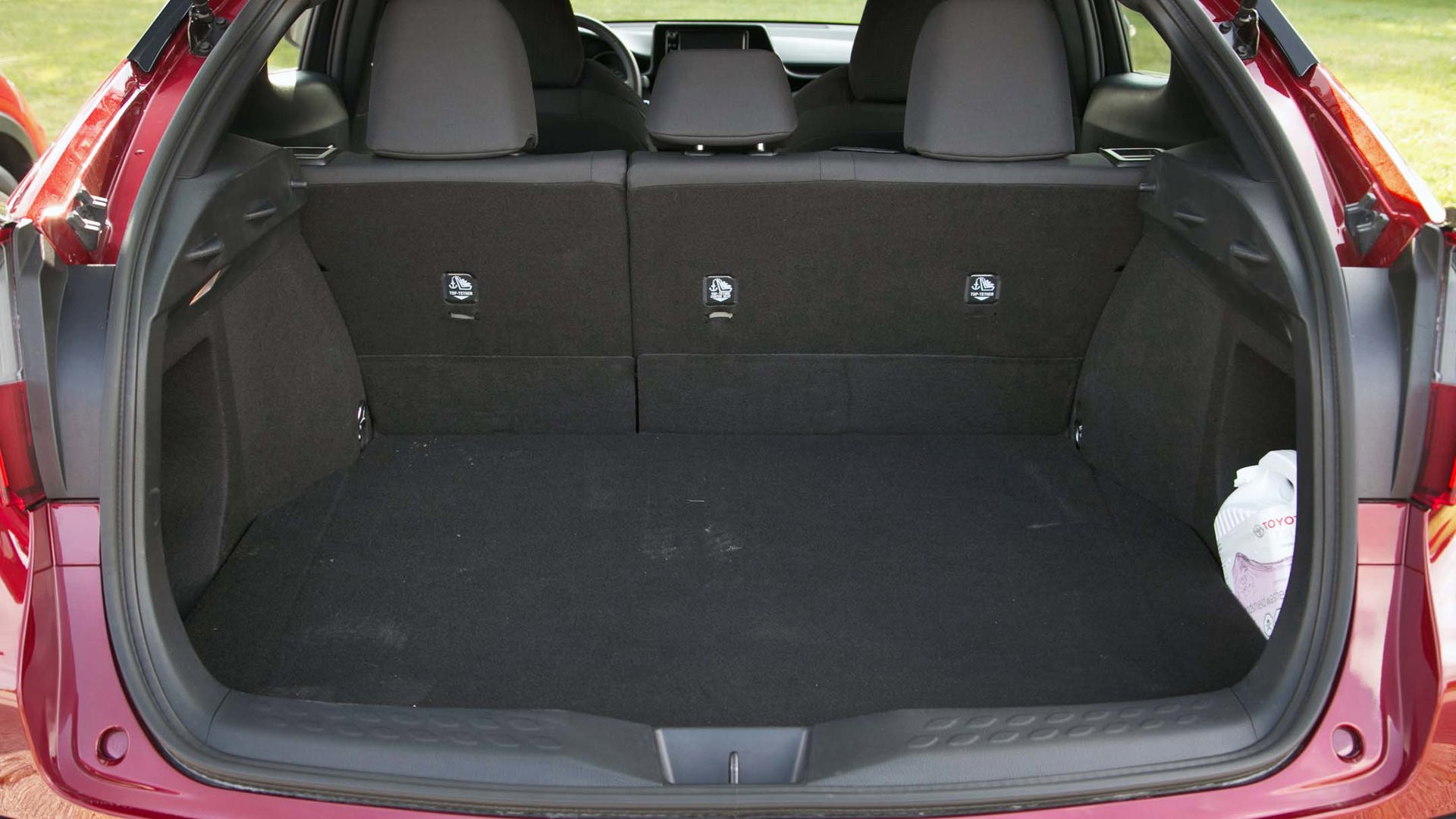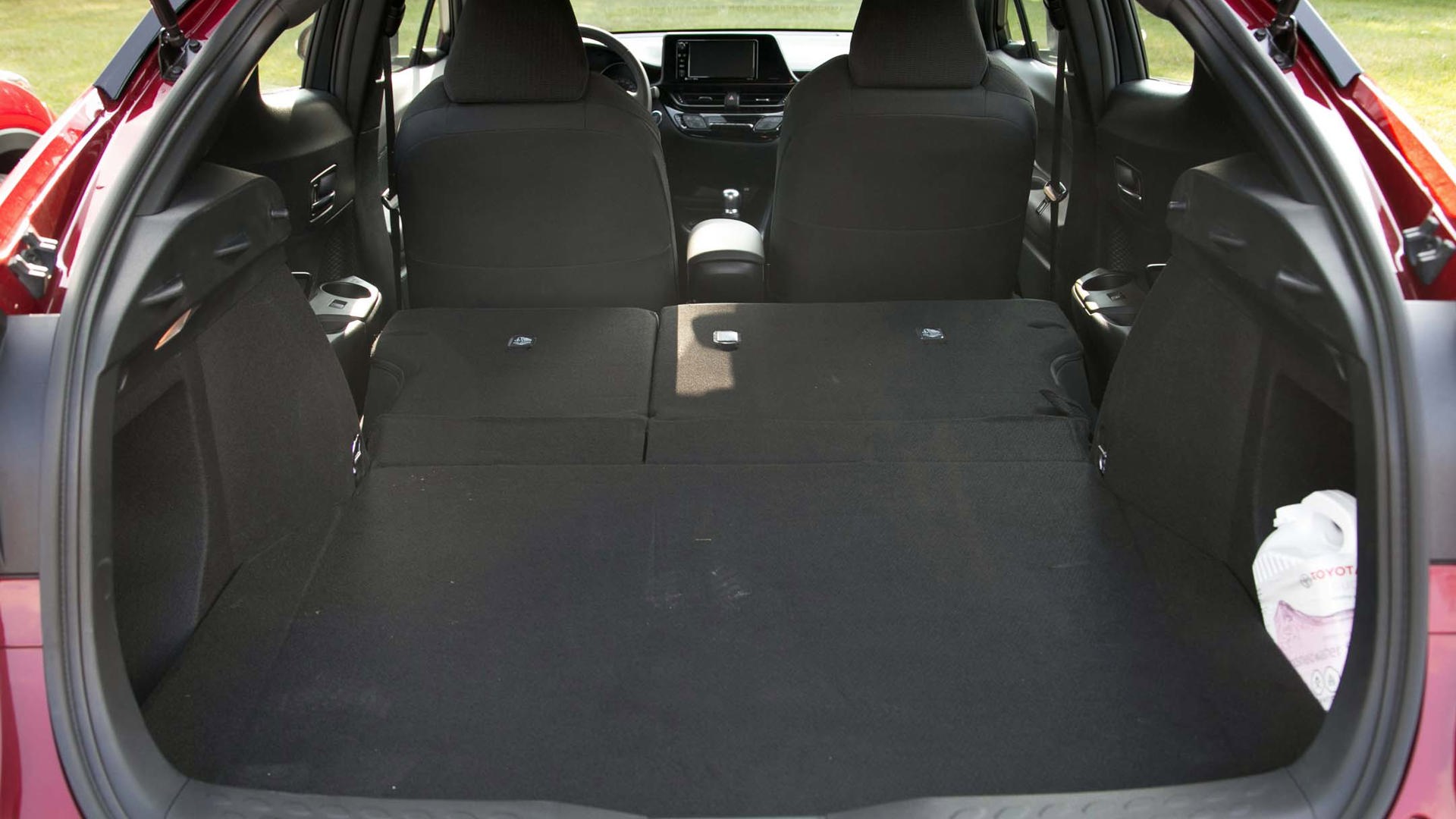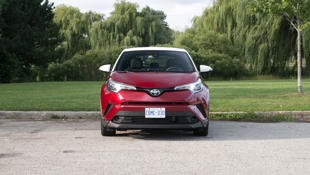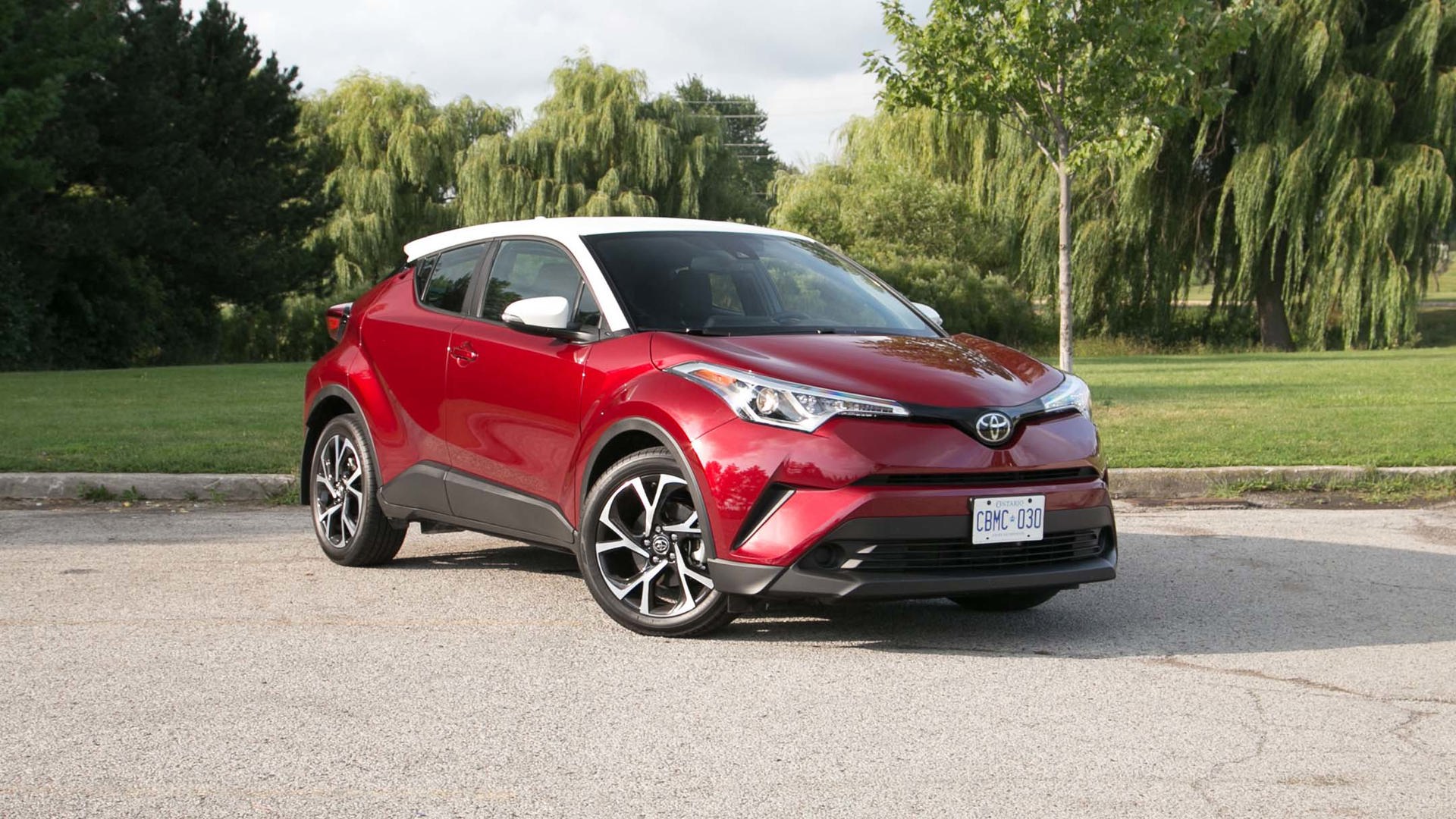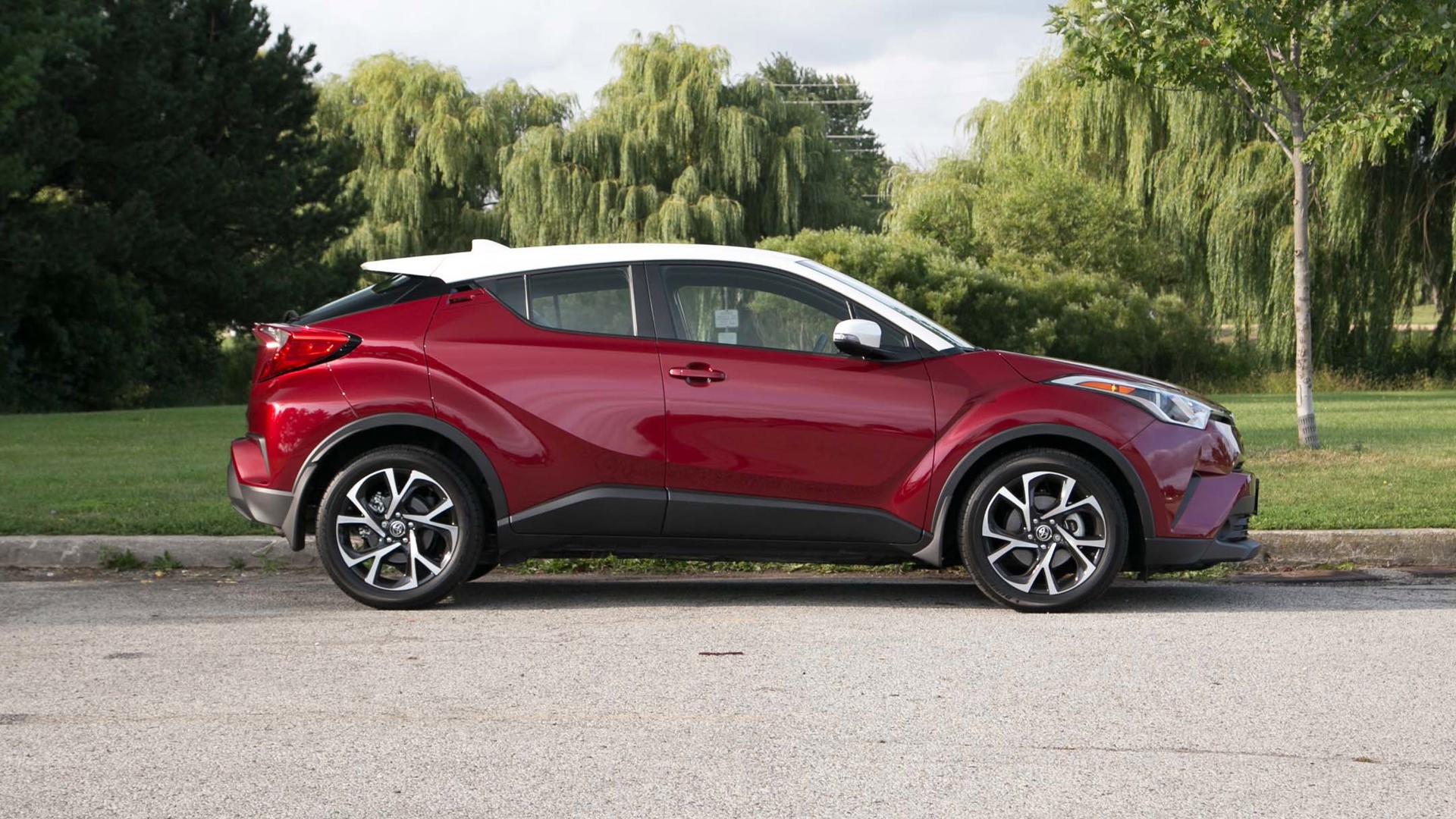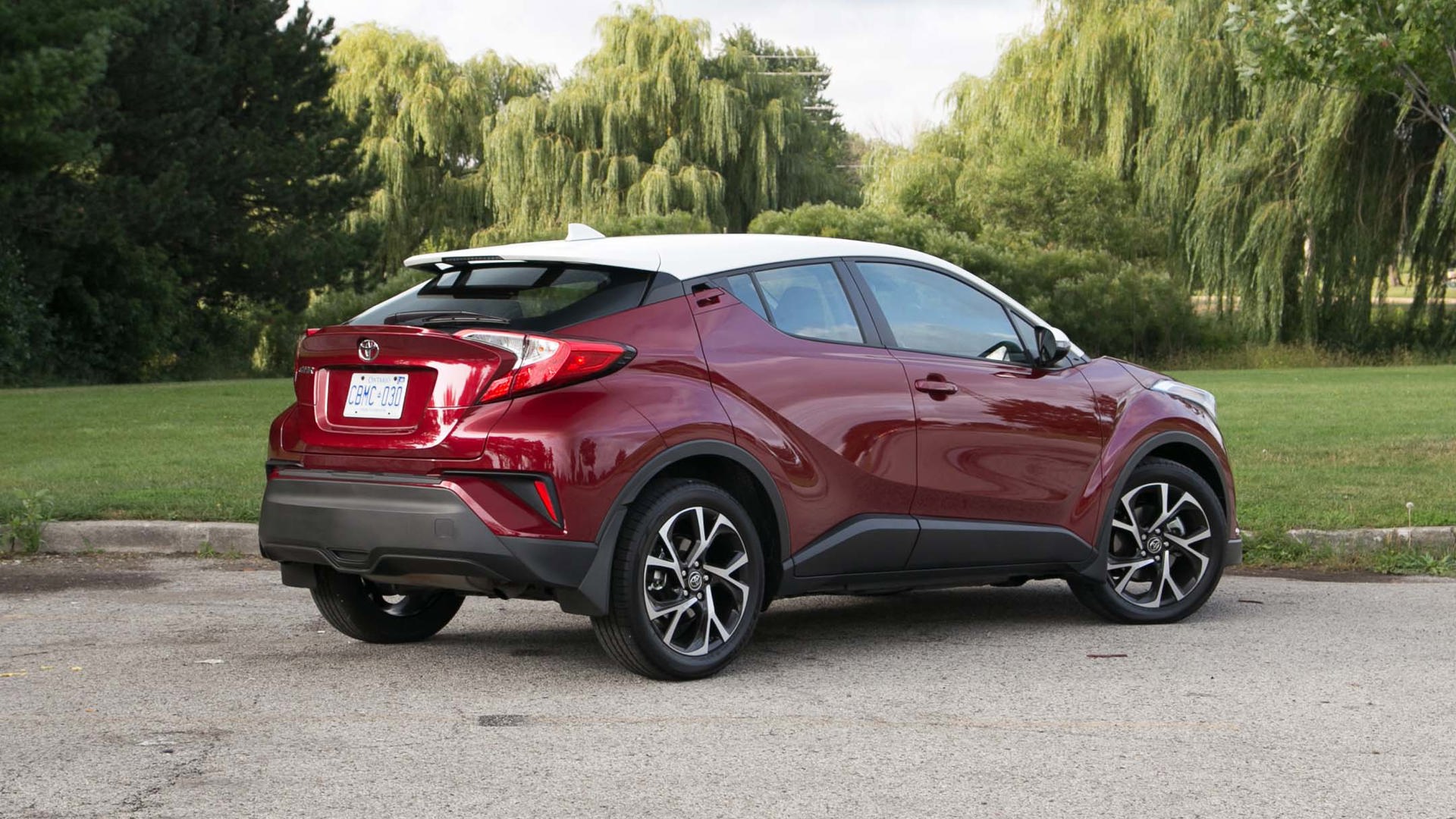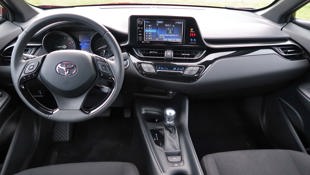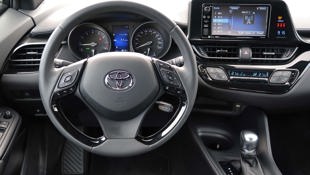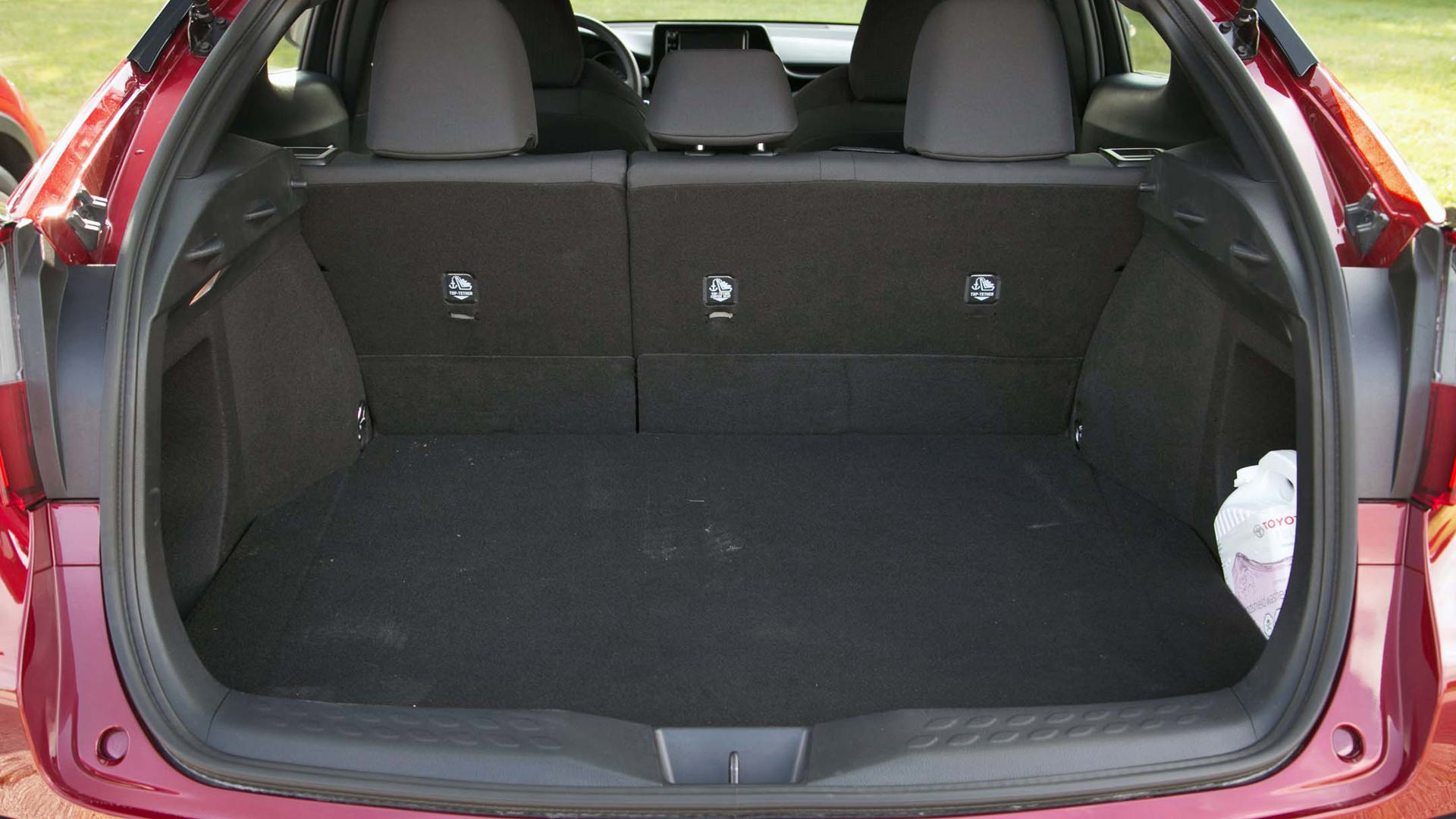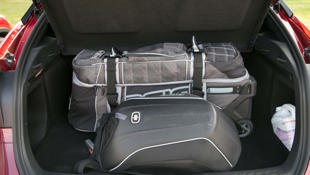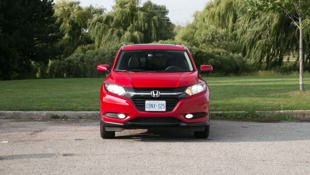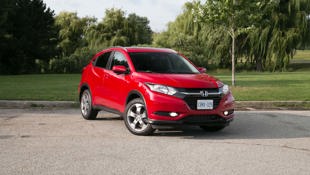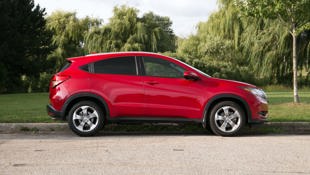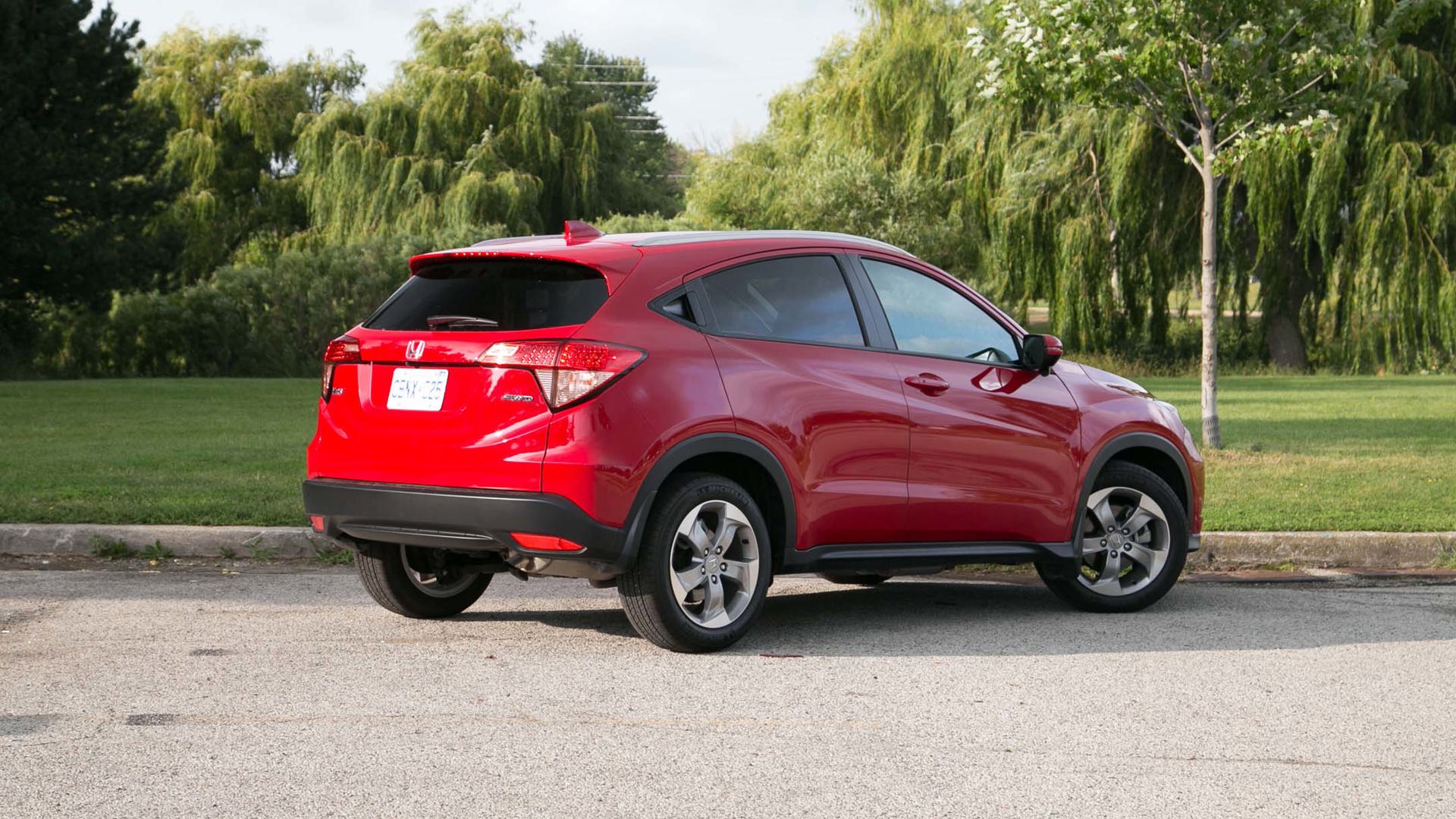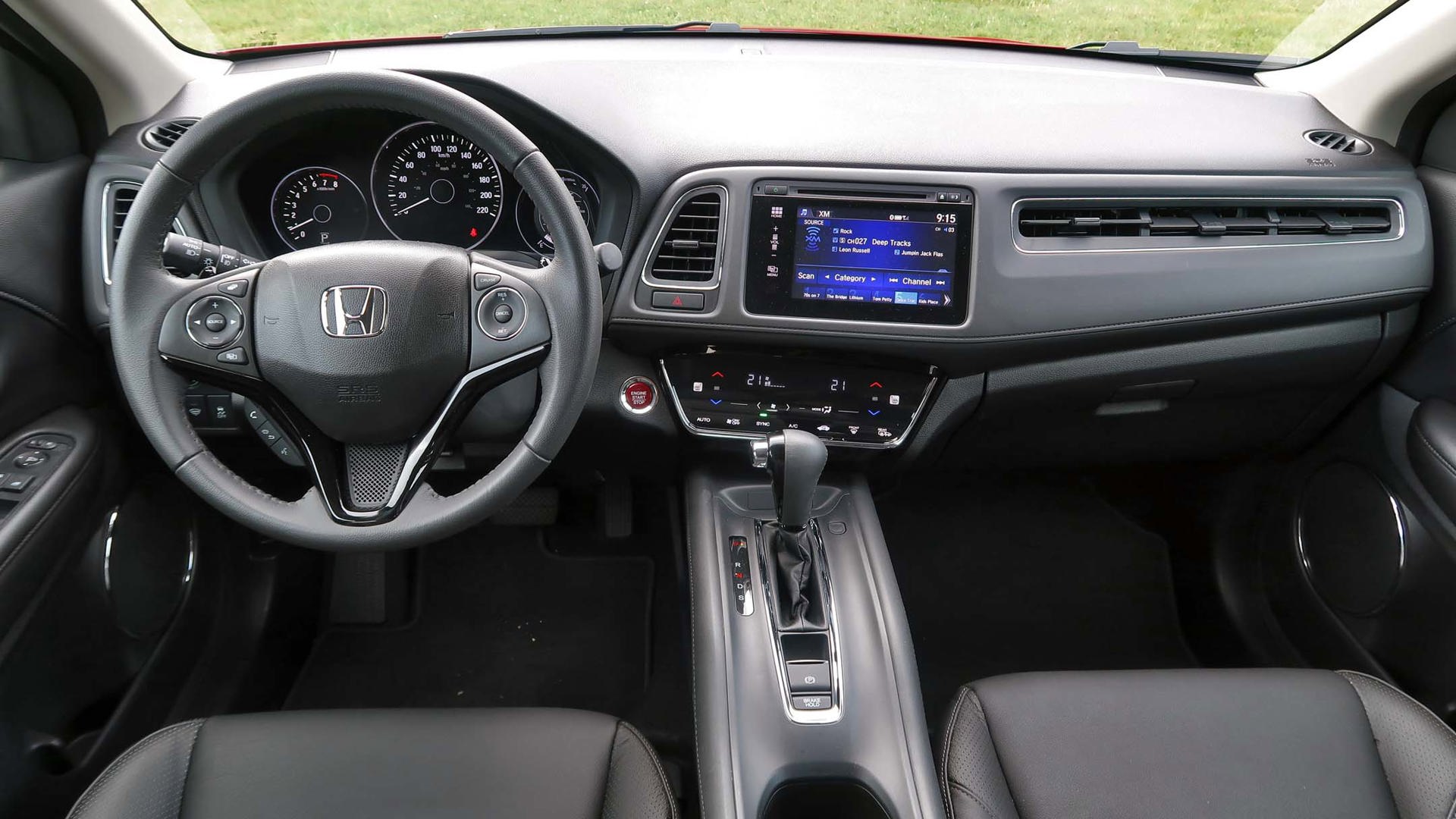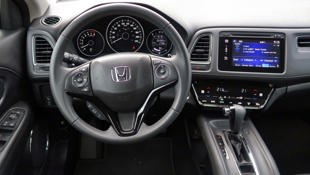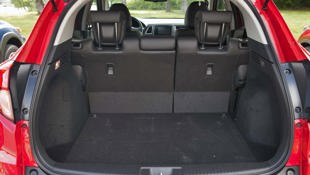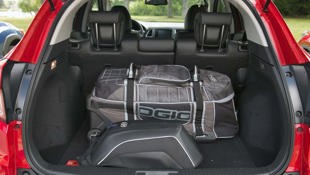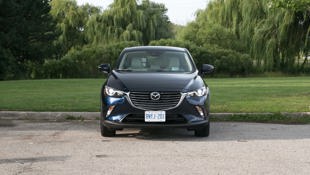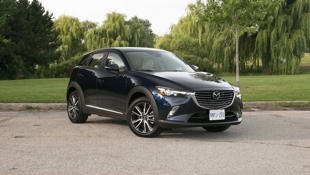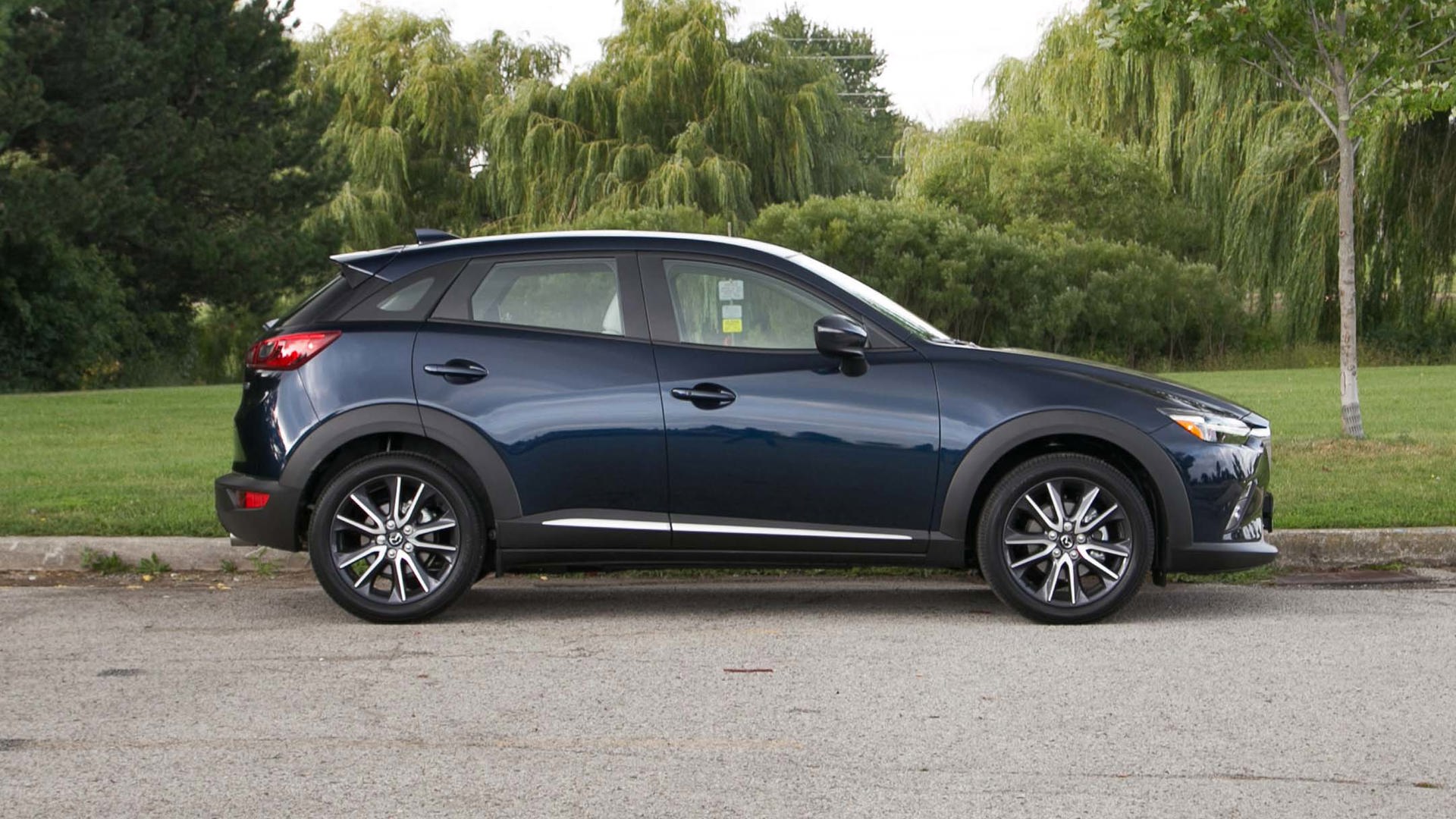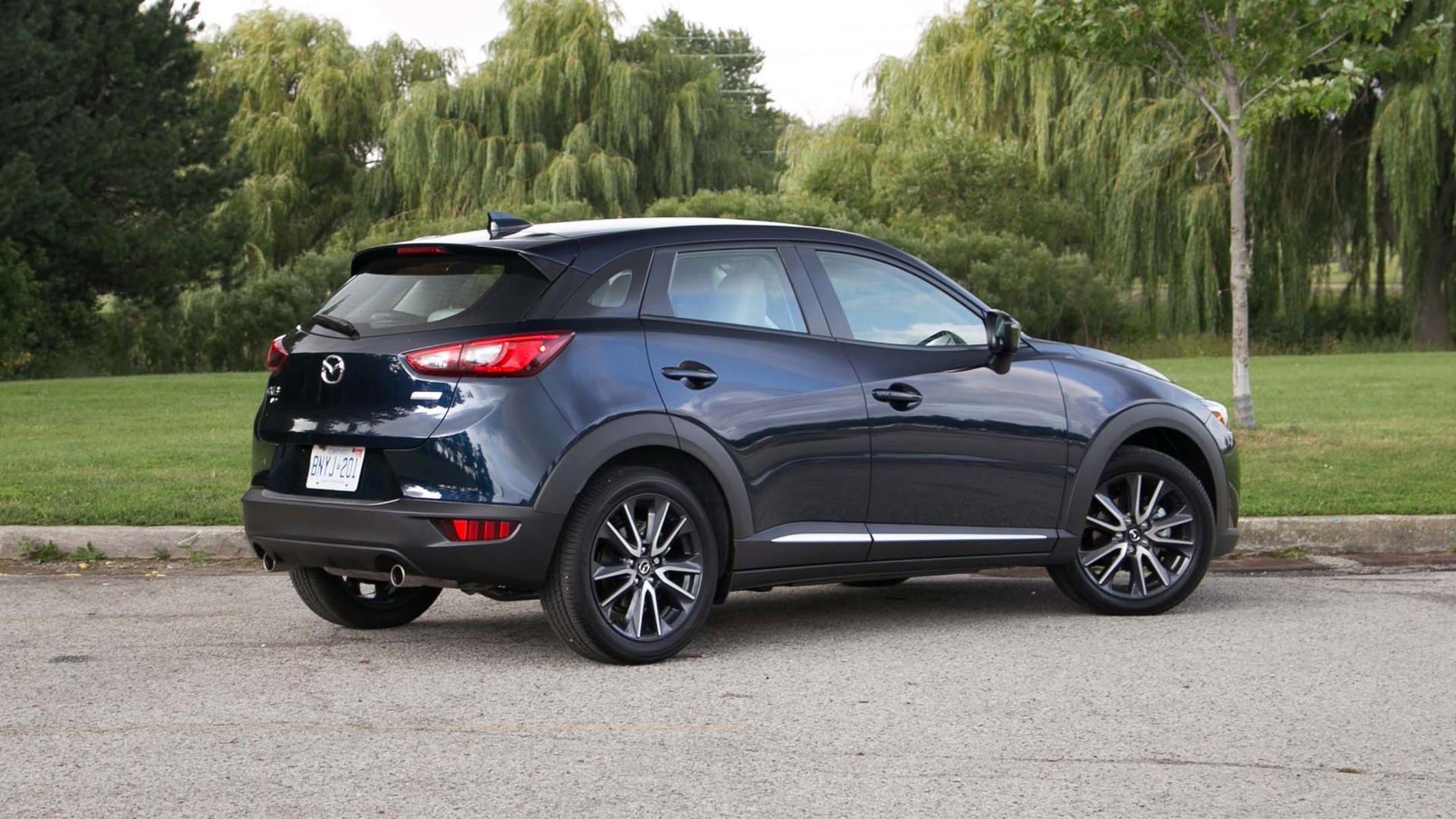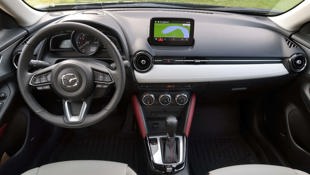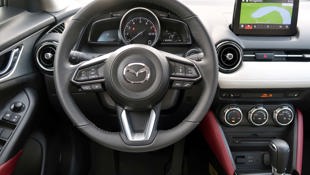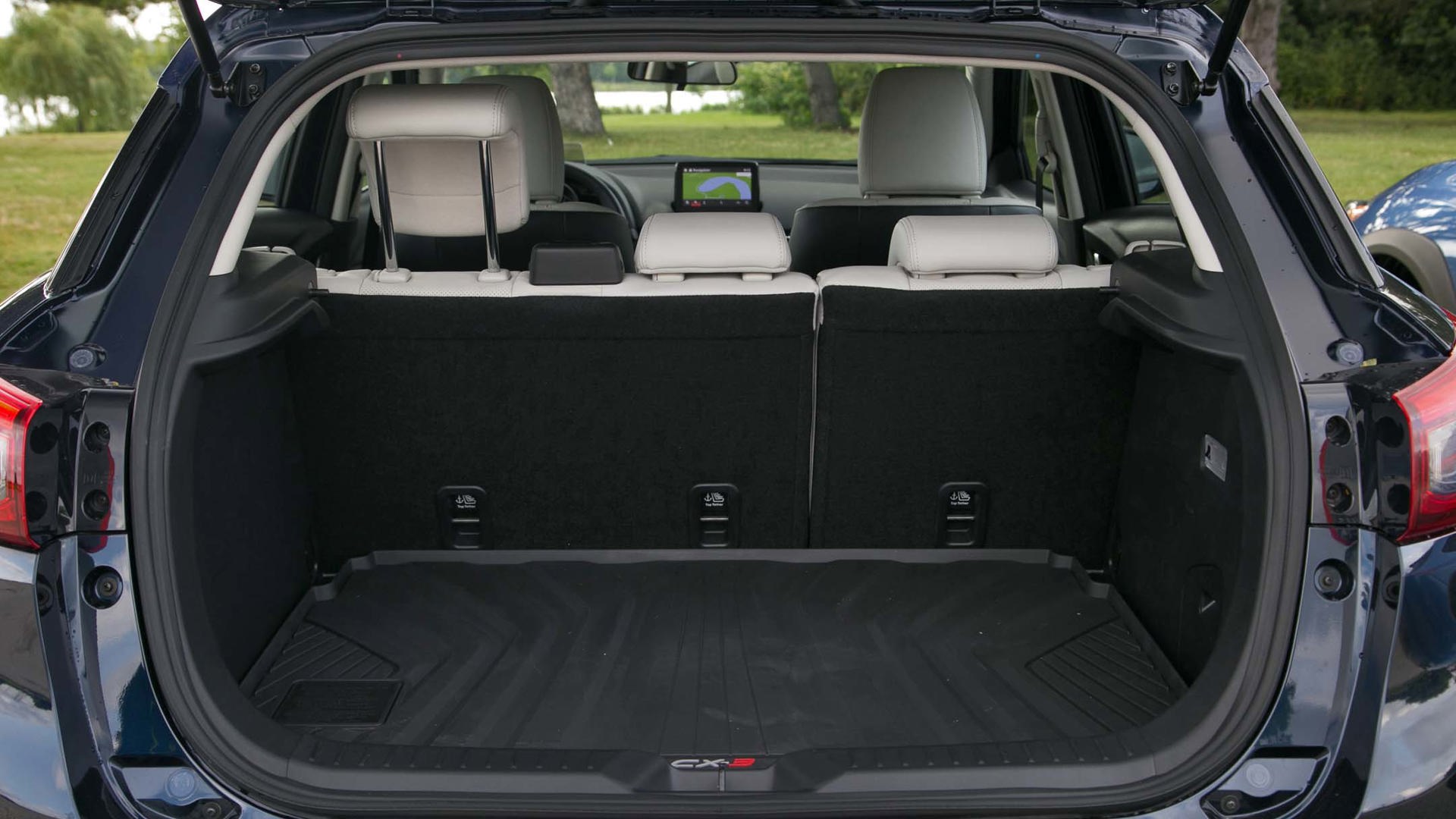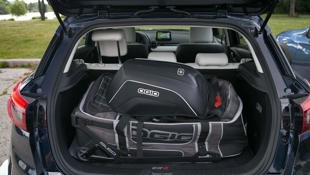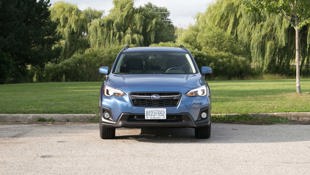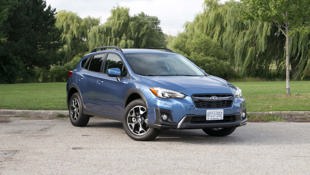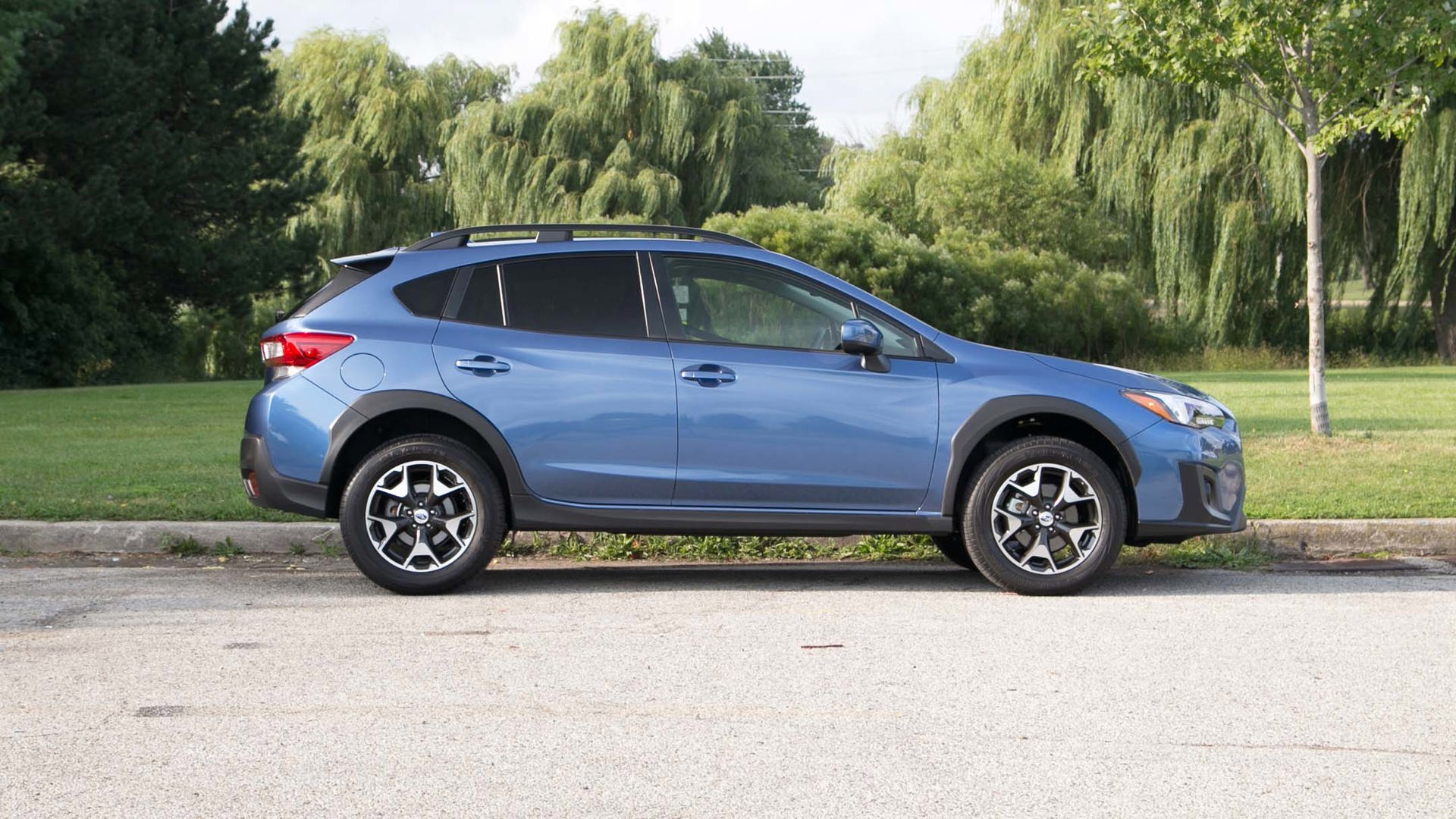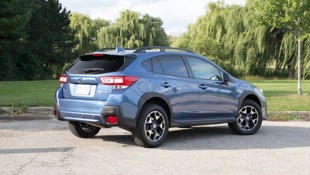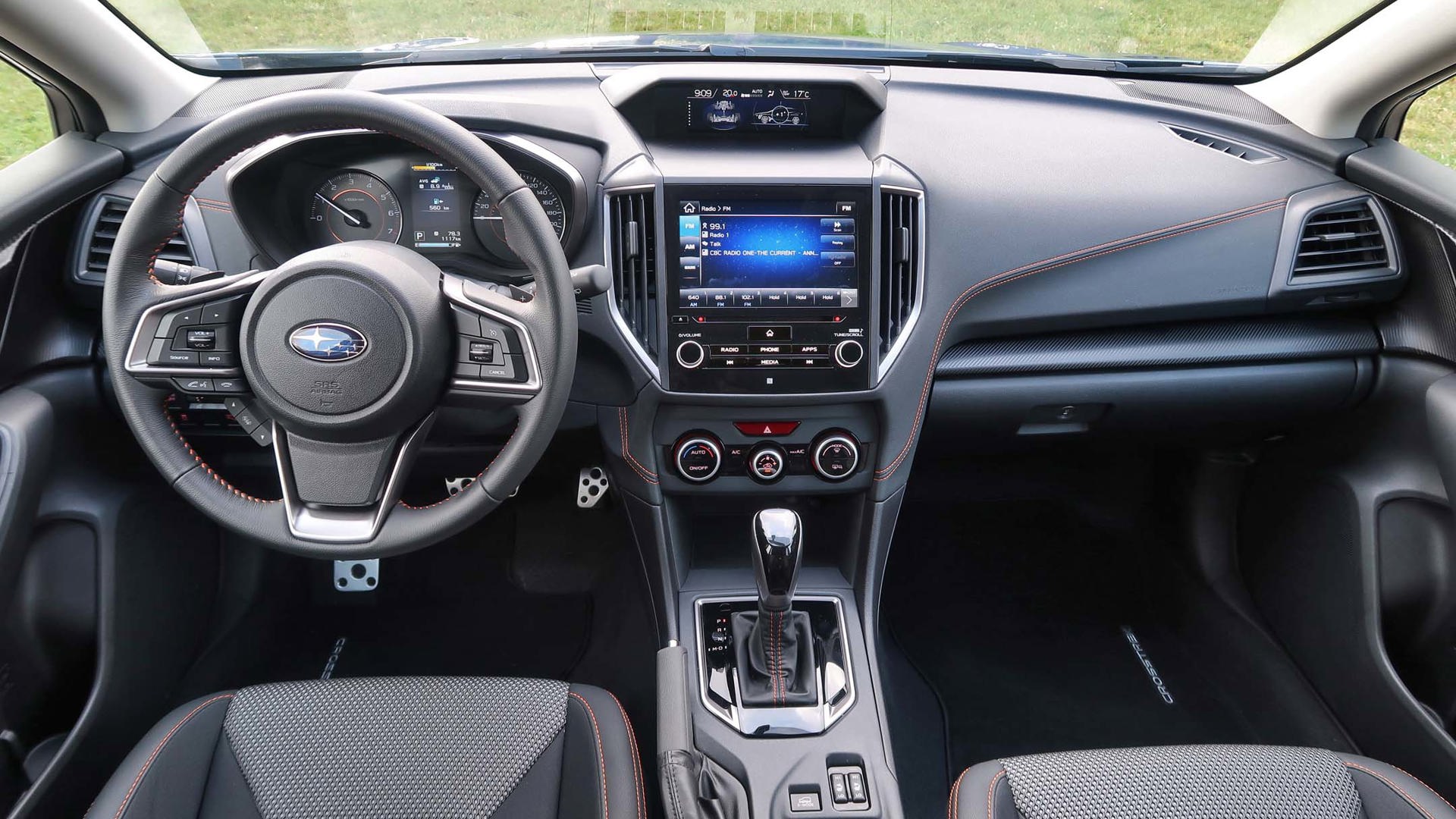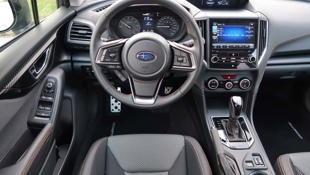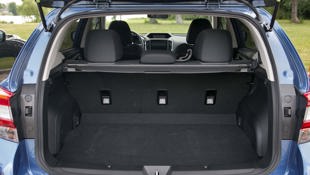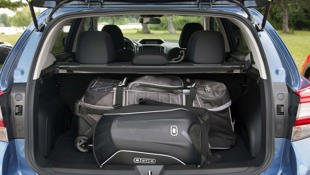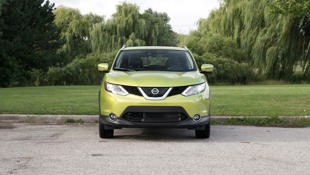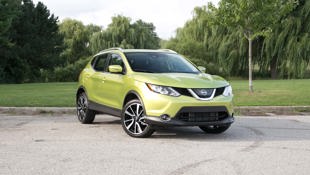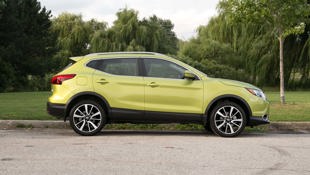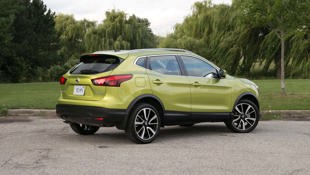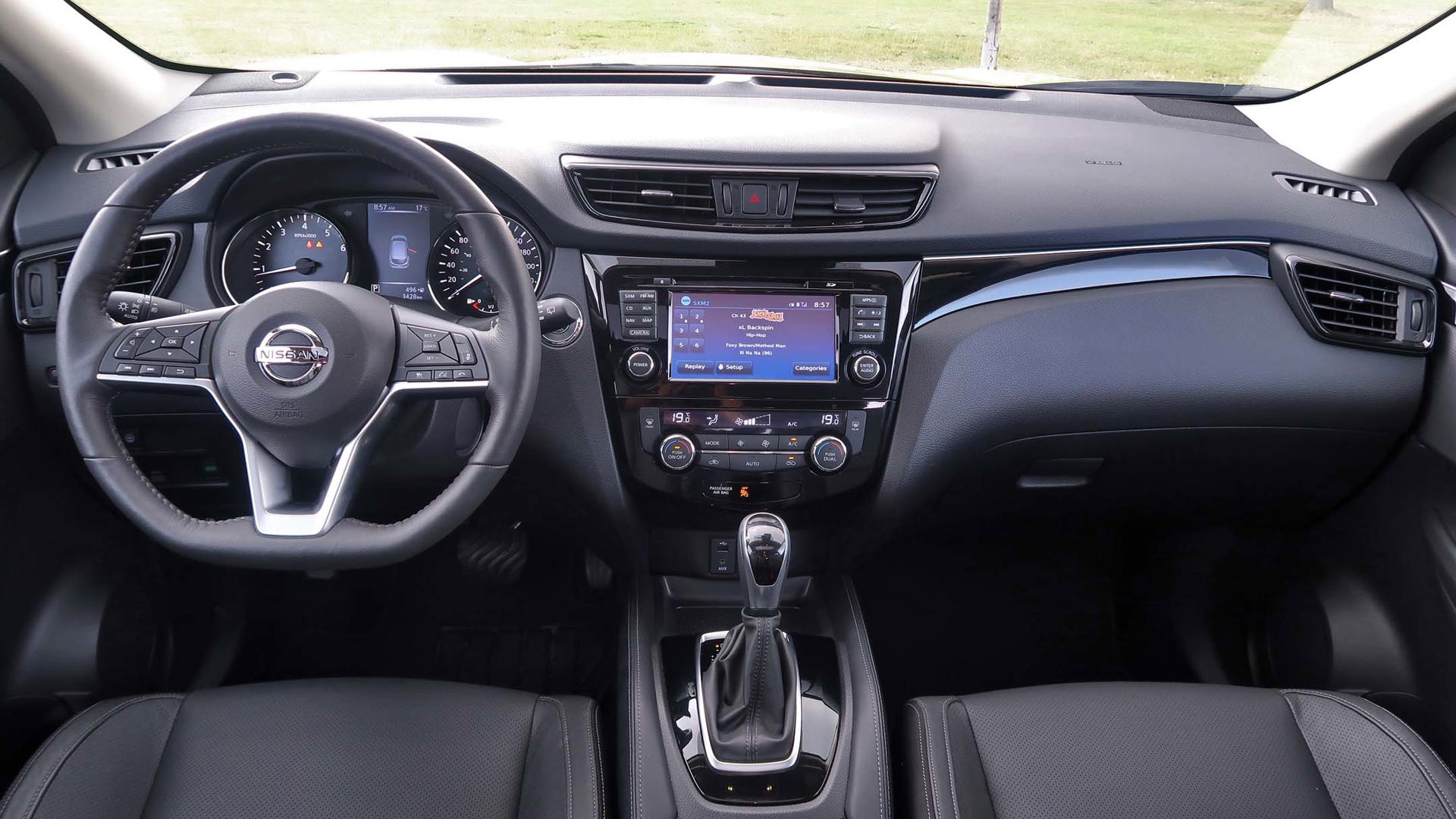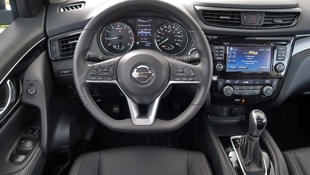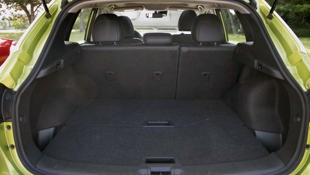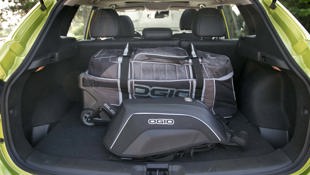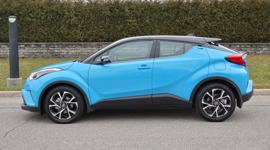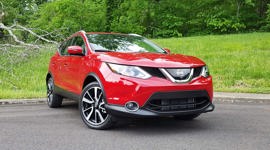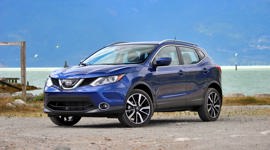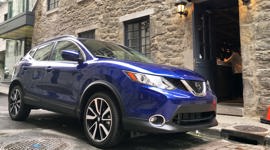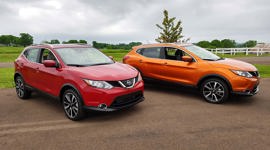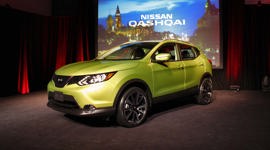Comparison Data
|
2018 Toyota C-HR
|
2018 Subaru Crosstrek
|
2018 Mazda CX-3
|
2017 Honda HR-V
|
2017 Nissan Qashqai
|
|---|---|---|---|---|
|
Engine Displacement
2.0L
|
2.0L
|
2.0L
|
2.0L
|
2.0L
|
|
Engine Cylinders
I4
|
H4
|
I4
|
I4
|
I4
|
|
Peak Horsepower
144 @ 6,100 rpm
|
152 @ 6,000 rpm
|
146 @ 6,000 rpm
|
141 @ 6,500 rpm
|
141 @ 6,000 rpm
|
|
Peak Torque
139 @ 3,800 rpm
|
145 @ 4,000 rpm
|
146 @ 2,800 rpm
|
127 @ 4,300 rpm
|
147 @ 4,400 rpm
|
|
Fuel Economy
8.7/7.5/8.2
|
8.8/7.2/8.1
|
8.8/7.5/8.2
|
8.9/7.5/8.2
|
9.1/7.5/8.4
|
|
Cargo Space
538/1,031
|
588/1,565
|
408/1,484
|
657/1,631
|
564/1,509
|
|
Base Price
$24,690
|
$29,095
|
$27,995
|
$30,450
|
$29,498
|
|
A/C Tax
$100
|
$100
|
$100
|
$100
|
$100
|
|
Destination Fee
$1,760
|
$1,725
|
$1,895
|
$1,725
|
$1,950
|
|
Price as Tested
$28,945
|
$30,920
|
$32,990
|
$32,275
|
$34,383
|
|
Optional Equipment
$2,395 – Premium Package $1,600; Optional Colour O2NE $795
|
None
|
$3,000 – Technology Package $1,000; i-Activ AWD $2,000
|
None
|
$2,835 – Platinum Package $2,700; Metallic Pearl Paint $135
|
The subcompact SUV segment has come a long way since Nissan and Mitsubishi launched the Juke and RVR. In that time that duo has been joined by a host of others, and with Honda’s launch of the HR-V and Mazda’s CX-3, the segment blew wide open. Toyota made its entrance in the fray this year with the C-HR and Ford will soon have its own entrant.
It’s barely a rounding error that kept the [SPOILER] out of the top spot, the scores were so close.
For this test, we took the best performers from our previous subcompact comparison, and newcomers like the C-HR and the Nissan Qashqai, to see who the new prince of petite would be.
The Absentees
The Chevrolet Trax, Jeep Renegade, Fiat 500X, and Mitsubishi RVR were all left out of this one for two reasons: One, they weren’t available on fleet, and two, they were bested in our previous test.
Kia’s new Niro was asked for, but Kia declined to enter its hybrid-only unit in this battle. Ford’s EcoSport won’t be here ’til next year, and you can bet we intend to put it against the winner of this comparo when it arrives.
The Method
As always, our test involves a crop of our award-winning journalists driving these five cars back to back on a pre-determined identical route, and scoring them in seven major areas, over more than 30 separate scoring points. For this test, we spent longer than ever working on our ratings, trying to make this test relevant to the majority of buyers.
Our seven categories? Design and Ergonomics (15%), Seating and Cargo (20%), Features and Quality (20%), Ride Comfort and Handling (15%), Drivetrain Power and Refinement (10%), Fuel Economy (10%), Value and Appeal (10%).
As always, your individual needs may vary. That’s why we put our category results at the bottom of this test, so you can see which of these five best tick your boxes. But to learn what we loved about each car, and why we had to rank them the way we did… read on.
Fifth Place: 2018 Toyota C-HR – Peter Bleakney
Toyota’s little crossover with the… er, challenging epidermis proved to be quite a divisive critter, and not just because of its looks. Granted, it was the least-expensive vehicle here at $28,945, but it was also the only front-driver (the C-HR is not available with all-wheel drive) and its feature content was a bit lacking when compared with the others. So in a way, it was the odd man out.
The fact that the C-HR landed in last place here is by no means a condemnation of its abilities. Lack of AWD certainly hurt it, yet scores were very close, and despite its wacky sheet metal, the little Toyota impresses with its excellent fuel economy, comfort, ease of use, standard safety kit (Toyota Safety Sense-P) and commendable dynamics.
And we were all over the map when it came to appreciating the C-HR’s (compact high-rider) aesthetics. To wit, Jacob noted: “What a great looking car! Toyota stylists finally get let off the chain and they deliver a stunner.” Jil: “The front-end styling is distinctive and refreshing, while the weird back end could have starred in Mars Attacks.” Toyota speaks of the “sexy diamond” theme, and this motif is found looking at its flanks, where the roofline and wheel arch creases frame a diamond. Inside, the theme is echoed by the air vents, speaker covers, button clusters, door panel pattern and some embossing on the headliner.
To a person, we found the front fabric buckets to be fabulous – comfortable and supportive for the long haul. Rear-seat passengers won’t be as happy, however, as their cushions are flat, and thanks to the highly stylized bodywork, it’s dark and cave-like back there. Other prices to be paid for the Mars Attacks derriere include woeful rear blind spots and a roofline that cuts into usable cargo space. Additionally, the “hidden” handles on the rear doors are awkward to manipulate, and little people will not be able to reach them.
All this points to a crossover aimed at a young, hip, urban and childless demographic, and not those floundering through the joys and trials of procreation.
The C-HR’s interior garnered mid-pack scores for styling, although it is logically laid out and benefits from standard 7.0-inch touchscreen, a steering wheel trimmed in fine-feeling leather, auto-dimming mirror and full-boat Toyota Safety Sense (TSS-P) that includes adaptive cruise with full stop, auto high-beams, pre-collision with pedestrian detection, and lane-departure alert with steering correction.
Not having Apple CarPlay or Android Auto could be considered a glaring oversight when considering this car’s target audience. Toyota is going with the AHA smartphone-integrated audio system.
The back-up camera view shows up as a little “movie” on the left side of the rear-view mirror, leaving at least one of our testers to forget it was there.
There is but one upgrade package for the 2018 Toyota C-HR. The $16,00 Premium Package bestows 18-inch alloys, blind-spot monitoring with rear cross-traffic alert, push-button start, Smart Key System, and power-folding mirrors with puddle lamps that project a groovy C-HR logo onto the terra firma. Some paint hues cost extra, as does this two-tone treatment.
The C-HR rides on Toyota’s new stiffer and lighter TNGA architecture, here featuring front struts and multilink rear suspension.
The structure feels solid and substantial, and the suspension engineers have arrived at a formula that shows flat cornering and a quiet ride that is on the firm side, but always composed and never intrusive. In this regard, it puts the brash Mazda CX-3 and uneven Honda HR-V on the trailer.
Power comes from a new-to-North America 2.0L naturally aspirated four that puts out 144 hp and 139 lb-ft at 3,800 rpm. Transmission duties are handled by a continuously variable transmission featuring seven programmed steps designed to mimic the feel of a “normal” gearbox.
None of the compact crossovers in this comparison test felt particularly eager, so the Toyota’s performance melded in to the overall experience. That said, some testers found the CVT to incite more engine “moaning” than the other CVT-equipped vehicles here. Once up to speed however, the C-HR’s cabin is commendably serene.
That it handily turned in the best fuel economy of the bunch is another feather in its origami cap. As Jacob (optimistically) said, “Could have won but for some obvious missing items.”
Fourth Place: 2017 Honda HR-V – Jil McIntosh
Honda’s HR-V is based on its smaller Fit hatchback, and that’s where this little sport-ute gets its practicality – and in this segment, if a vehicle isn’t useful, what’s the use?
It borrows the Fit’s “Magic Seat”, the best back seats since back seats were invented. You can flip them up or fold them down into three positions with one hand, and when they’re down, the flat cargo space all but rivals a small pickup truck. These were also among the most comfortable rear chairs in the group.
As Jacob Black says, if you have a dog and especially a big one, “this is 100 percent the car to get.” I’m not sure if Peter Bleakney was moving or just taking his stuff for a ride, but he fit a dresser, chair, big plastic bin, “and a bunch of other stuff in it”, and declared it has “crazy clever cargo capacity.” The only sour spot is a way-weird solid tonneau cover, since there’s no good place to stow it when you want to carry tall stuff.
But it takes more than cargo capacity to win a comparo, and the Honda didn’t fare as well from behind the wheel. At 141 ponies it ties the Qashqai for lowest horsepower of the group, and trails everyone with just 127 lb-ft of torque. It gives you a deceptively decent burst when you first hit the throttle, but then, as Jeff Wilson puts it, this “quickly softens into lukewarm mid-range power.” Getting up to highway speeds is a noisy chore.
Most had somewhat loud rides, but the HR-V crashed and banged the worst over bumps. And that’s a shame, because I really liked the light-but-not-too-light steering and the car’s agile feel. On a slithery stretch at speed, I found the Honda did a much better job of hugging tight curves than the Crosstrek I’d driven right before it. For steering response and handling, I thought only the CX-3 did a better job.
The HR-V’s looks didn’t resonate with some of my cohorts, but what do they know? I like the styling, especially the sharp side body lines, although that upswept glass cuts into visibility. The wide tailgate not only provides an equally wide cargo opening, but it runs all the way down to the rear fascia, so there’s a low lift-over for easier loading. Hiding the back door handles alongside the window gives the HR-V an attractive two-door look. Their vertical position makes them easier to use than the C-HR’s hidden horizontal ones, but be warned: if you have smaller children, they probably won’t be able to reach the handle on either one to open the door.
Steven Bochenek describes the interior as “boring as Canadian history,” and I have to agree. Despite having the third-highest price, the Honda’s plain, plastic-heavy dash looks low-rent. And while you get leather upholstery in this trim level, the driver’s seat is manually adjusted.
As Bleakney says, “Honda must be very tired of having that crap interface trashed at every turn,” but it must be said. The stereo sounds fantastic, but it needs the volume dial that is finally being added to some other models. Apple CarPlay and Android Auto are missing, and as Black points out, there are a lot of people for whom that’s a make-or-break.
This trim also includes LaneWatch, which uses a passenger-side camera to broadcast that view in the centre screen whenever the right-hand turn signal is on. I’ve never quite made up my mind if it’s better than a blind-spot monitoring system. It gives a great clear picture so you can see if a pedestrian or cyclist is coming up alongside, but on the other hand, it doesn’t provide any warning on the driver’s side as a blind-spot system does.
Overall, the HR-V is so damn practical and well-sized, and that could be enough for many buyers. But put more pop under the hood and more cushion in the suspension, and this could rise to the top of the charts.
Third Place: 2018 Mazda CX-3 – Jacob Black
Another subcompact SUV comparo… another podium for the Mazda. That’s twice in a row it has finished third, though this time with revised interior, improved NVH and a slightly revised scoring system, the CX-3 bested the HR-V.
The Mazda was “easily the nicest inside of the bunch” according to Steven Bochenek and his sentiments were echoed unanimously. There were some quibbles, however. As Peter explains the interior shows “excellent build quality and I love the white and burgundy leather accents. But no centre armrest, dimly lit major gauges, and that infotainment interface requires way too much twirling and nudging just for basic things like changing radio stations.”
The CX-3 is the most car-like here, and it’s also the smallest in terms of cargo volume and passenger volume by a considerable margin. That’s despite being similar in length to the others. The culprit? A long, long, long hood. For a car with such a tiny engine, the CX-3 sets aside an inordinate amount of room forward of the A-pillar. While the CX-3 is a stunner (and easily won for exterior and interior design) that reverse TARDIS set-up saw it dead last in Seating and Cargo.
Frankly, the CX-3 is much more “tall hatch” than SUV. It doesn’t quite fit in this segment, yet it doesn’t fit anywhere else. As Jil says, “It also feels more like a tall sporty car than a small family hauler, which is good for those who like a sharp-handling machine, and not so much for those who prefer a smooth ride to the CX-3’s firm and noisy one.”
The six-speed auto was the only non-CVT engine of the bunch, but with only 146 hp it’s not like this drivetrain is a rocket ship. In fact, it tied for second with the Crosstrek on Drivetrain Refinement and Power, behind the Qashqai which won that segment thanks to its low engine noise and smooth operation.
I really enjoy Mazda’s infotainment system and especially like the head-up display. But the HUD doesn’t impress everyone, and the execution of the infotainment needs some tweaks. “The head-up display looks chintzy and it’s really an upright gauge, rather than head-up, because you have to continuously change your focus, but I like that it shows you speed limits, stop signs, the blind spot, and navigation information,” explains Jil.
The addition of Android Auto and Apple CarPlay would be welcome, and the ability to tune the radio with one knob or button instead of clicking through a minimum of two screens is something Mazda should work on posthaste.
Ultimately it was a poor showing in terms of cargo volume, plus the second-worst score in fuel economy that really hurt the Mazda.
Mid-pack finishes in Features and Quality and Ride Comfort and Handling were enough to cement third here, and our scoring really highlighted the Mazda’s two core strengths.
Being such a fun car to drive despite an underwhelming engine is testament to just how well executed this chassis is. I’d suggest that driving enjoyment is the CX-3’s second-biggest draw for consumers, with the biggest being its impeccable interior styling and quality.
As a car, the CX-3 is brilliant, but as an SUV – well, it’s an excellent car.
Steven provides a perfect segue to our second-place finisher with this quip: “Why get an SUV when you can’t even take it over a curb, let alone off-road?”
Second Place: 2018 Subaru Crosstrek – Jeff Wilson
It’s barely a rounding error that kept the little Subaru out of the top spot, the scores were so close. That means the Crosstrek deserves a shopper’s careful consideration in this segment. Second place is the first loser? Not here it isn’t.
We shouldn’t be surprised by the Crosstrek’s solid standing here either. After all, the previous generation took the top prize less than two years ago when we last visited the category . Much of what we loved about the Subie then holds true today with this all-new-for-2018 Crosstrek.
To begin, the Crosstrek was praised by most of us for its CVT transmission, and since generally we driving enthusiasts detest these systems, this is high praise indeed. It’s a system that mimics the gear changes of a traditional automatic, reducing the moaning and droning associated with some of the competitors here, yet still helps achieve superior fuel efficiency.
Subaru’s 2.0-litre Boxer engine does a decent job motivating the middle-weight Crosstrek with its best-in-group 152 horsepower. Jil found the throttle a bit touchy, but agrees that it smooths out as speed builds. And like me, she enjoys the “meaty little growl of that flat-four engine.”
On the road, the Crosstrek’s handling and steering feel is decidedly car-like. That said, the Yokohama Geolander SUV tires howl when provoked with moderate cornering, but Subaru’s celebrated Symmetrical all-wheel-drive system helps the Crosstrek grip and go. And of course, when the weather inevitably turns even more miserable, a good set of winter tires and X-Mode will make this thing virtually unstoppable.
Inside this new Crosstrek’s interior is an astonishing upgrade over the outgoing model in terms of style and quality, but it still doesn’t feel as posh as the Mazda’s. However, the Subaru’s space is far more usable than several of the other cars here. The Crosstrek offers functional passenger and cargo space, and thoughtful soft-touch materials everywhere an occupant is likely to come in contact with the car.
In what could be a make-or-break situation for many tech-savvy buyers, the Crosstrek is the only machine in this test to offer Android Auto and Apple CarPlay. And while our test machine wasn’t so equipped, Subaru’s excellent EyeSight system (that incorporates adaptive cruise control, pre-collision braking, lane-keeping assist and automatic high-beam control) added to our test machine would still only price it mid-pack. This means the Crosstrek is an outstanding value in the class as well.
So why didn’t the Crosstrek take home the big prize? Our team voted it into second place in almost every category, but winning no single category – the only machine to have that dubious honour. This is the most well-rounded machine in the lot, but didn’t blow us away with anything in particular.
It’s the fickleness of style that most likely cost Subaru the win though. While some of us maintained our manners and said nothing of the Crosstrek’s appearance, others couldn’t help themselves. Peter suggested the Subaru was “uglier than homemade sin.” Steven was even less charitable, calling it “so ugly it could’ve been designed by a committee from a North Korean tractor collective.” Yikes. We’ve also seen Peter wear lime green dress shoes, so his eye for style may differ from yours.
The bottom line: for shoppers seeking practicality, all-weather capability and excellent value over fashion, the Subaru may be the clear winner.
Winner: 2017 Nissan Qashqai – Steven Bochenek
I walked in to this back-to-back test believing Mazda’s CX-3 would win. Yet, after carefully considering and reconsidering each category on autoTRADER.ca’s ratings sheet, I tallied all scores and wound up disagreeing with myself. Imagine my surprise!
Consider it an indication of how closely these five vehicles compete. They’re so similar that, as our test has shown, a slight skew in your list of needs for a crossover/SUV would likely net a different winner.
So why did this difficult-to-say car win? Well, as is implied above and was observed at its Canadian launch two month ago, the Qashqai ticks a lot of boxes positively.
Though always close, the Qashqai ranked first in four of our seven categories.
The Qashqai deserved its top ranking for features and quality because it delivers so many well-liked extras. Consider: Canadians love all-wheel drive. Not providing AWD to this market, as one competitor did, is like not bringing Timbits to a Saturday staff offsite.
Canadians also appreciate its heated steering wheel (leather-wrapped in this case). Meanwhile, a remote start allows for pre-cooling or heating – more comfort we crave. The Intelligent Around View monitor, Nissan’s groundbreaking 360-degree camera effect, makes parking and negotiating narrow alleys almost as easy as self-driving tech.
For $2,700 above this trim’s entry-level price of $29,498, the Platinum Package throws in even more wonderful features, starting with LED headlights, high-beam assist, and intelligent cruise control, which speeds or slows you to match the driver directly in front. Some of the package’s ever-important safety features include: forward collision warning, automatic emergency braking (with that all-important pedestrian detection) and blind-spot alert. In case the lane-departure warning doesn’t grab you when you’re drifting, intelligent lane intervention does. And rear cross-traffic alert makes reversing less dangerous to those outside the vehicle.
The Qashqai’s first-place rating of 8.0 for Ride Comfort and Handling deserves qualifying: our last-place Toyota C-HR received 7.4. Meaning? Within a range of 10 possible points, this category’s difference from top to bottom was just 0.6. Nonetheless, the Qashqai’s ride is smooth without sacrificing the feel of the road much. It handles remarkably well. The rack and pinion steering is well balanced and the brakes feel great. Boxes are ticked!
The category of Drivetrain Refinement, which the Qashqai also took first in, was almost as close as the previous. It could benefit from more power – a four-cylinder 2.0L engine that’s direct-injected is capable of just 141 hp at 6,000 rpm and 147 ft-lb of torque at 4,400 rpm. However, unlike so many of its competitors, its continuously variable transmission doesn’t whine like a schoolboy given detention when you stomp on the accelerator – so I gave the noise/vibration/harshness subcategory a perfect 10. Jil was likewise impressed by the CVT saying she “likes the ‘stepped’ feel of the CVT, which seems more like a regular transmission.”
The Qashqai was the most expensive of the five testers and the last place finisher was also the least expensive. So you’d be tempted to believe Nissan was simply bribing us with features. However, the final category it won was value and appeal. Value means the product merits the price.
The three categories that the Qashqai didn’t win?
When you’re ticking a lot of boxes, something’s gotta give. Consequently crossovers are inherently ugly: the ’70s evening wear of modern design. So maybe it’s not a bad thing that the Qashqai only ranked second for Design and Ergonomics. Kudos to Nissan for owning its looks though. This tester’s “Nitro Lime” is the sort of colour you’d only choose if you hated your neighbours. Ergonomically speaking, though, most essential items are positioned where you want them to be. Hence, the still respectable second place.
For the Seating and Cargo category, the Qashqai placed third. Cached beneath the false floor in the trunk, its Divide-N-Hide cargo system is meant to help organize you. “The dual-piece false floor is a pain in the butt to move around, but I like that it can be folded in half and set upright to keep groceries from sliding around,” observed Jil.
However this ADHD-unfriendly puzzle of straps and dividers will have you reaching for bungee cords faster than you can’t say Qashqai. The lesson? Never send a Rubik’s Cube in to do a teddy bear’s job.
Finally, the Qashqai placed last for its Fuel Economy. You could argue that since this was the only one of seven categories where it was bottom of the class, the Qashqai’s a big winner. And to be fair, none of these SUVs did exceptionally well on fuel efficiency.
And it could be argued that the very thing that made the Qashqai last in fuel economy was its biggest asset in our comparo. As Jeff noted, “It feels most SUV-like of the bunch with a taller vantage point for the driver and an overall larger feeling on the road than the rest.”
Peter also liked the heaviness of the Qashqai, saying it “feels solid and quiet, with good body control, a smooth ride and nice, linear steering.”
Ultimately, the Qashqai was the best-rounded package and a clear victor in more than half of our segments. And so, for being a well-executed unit that takes the “sub” right out of “subcompact SUV” – the Qashqai is our winner.
